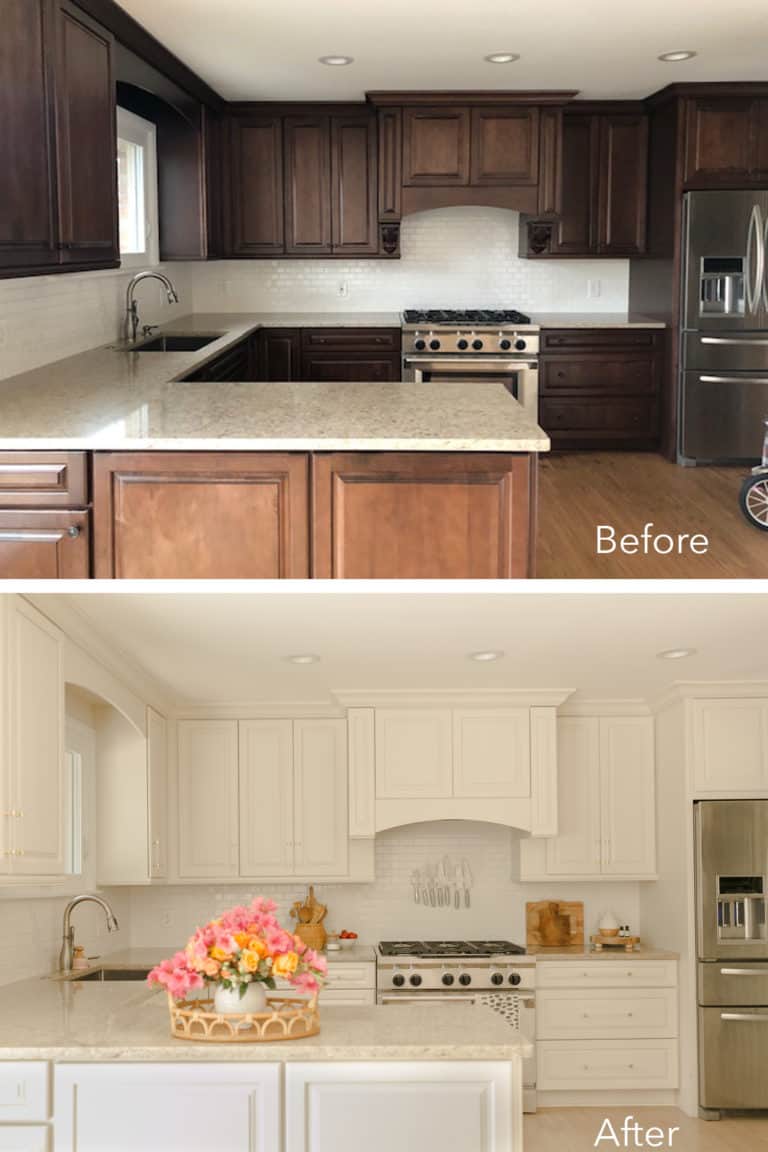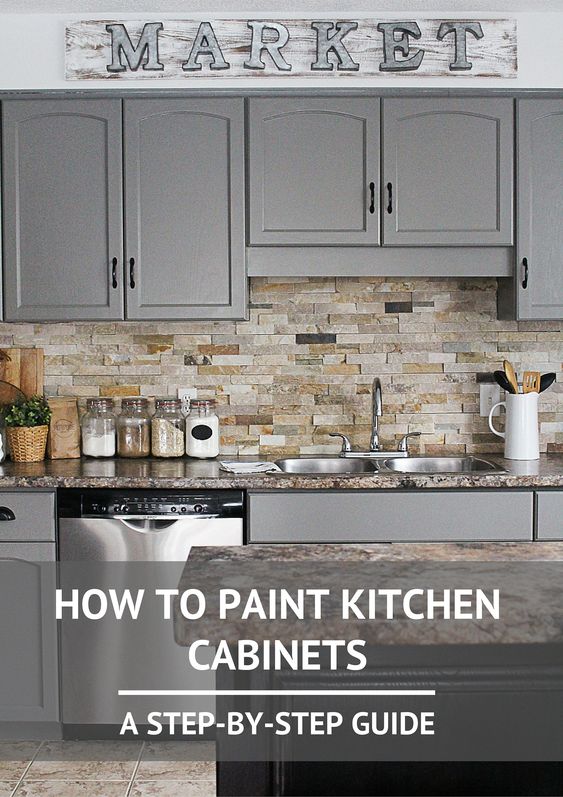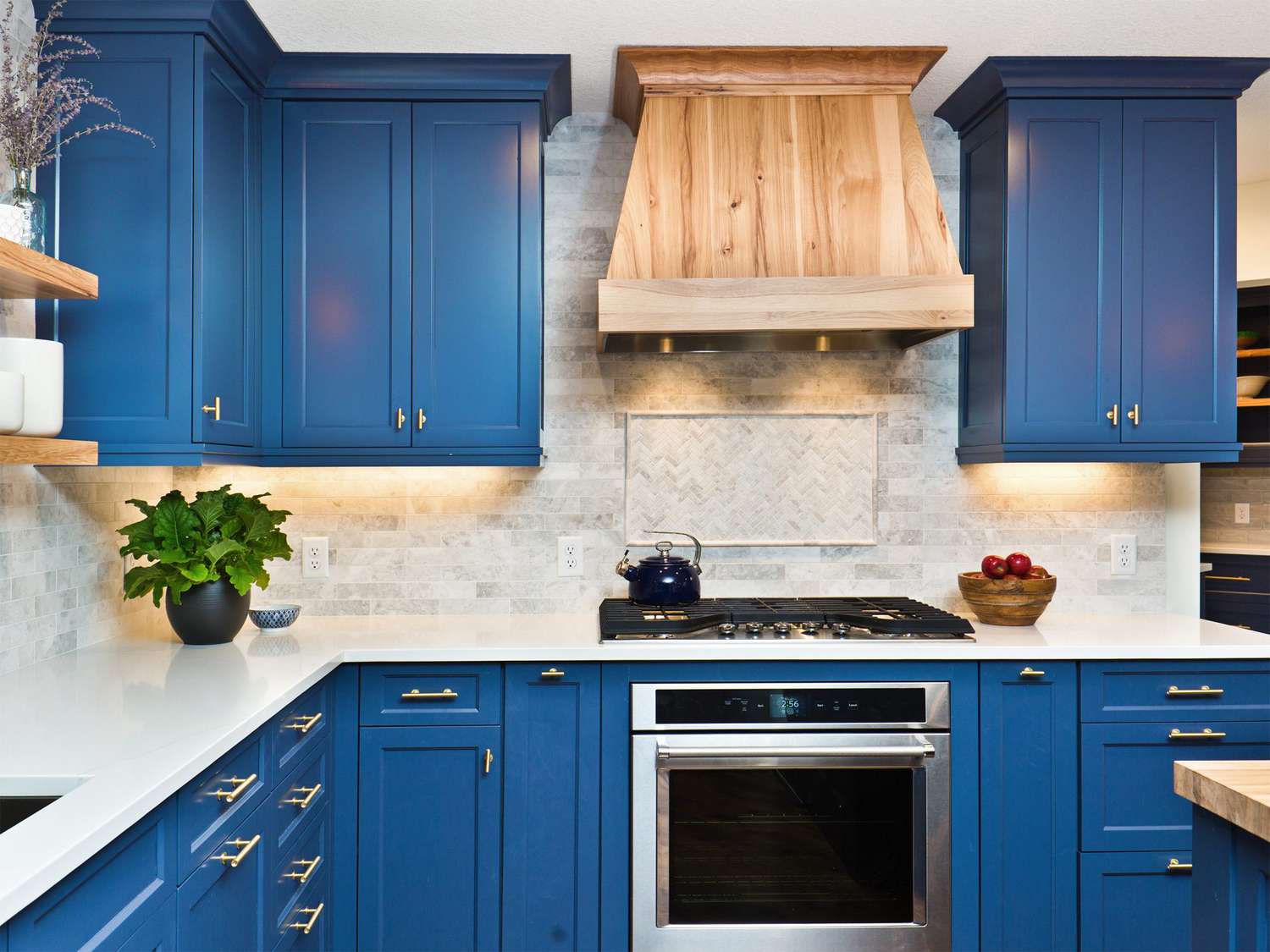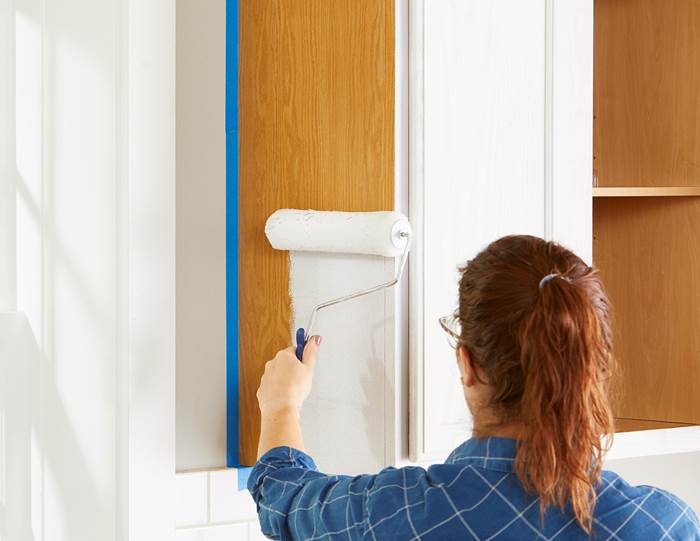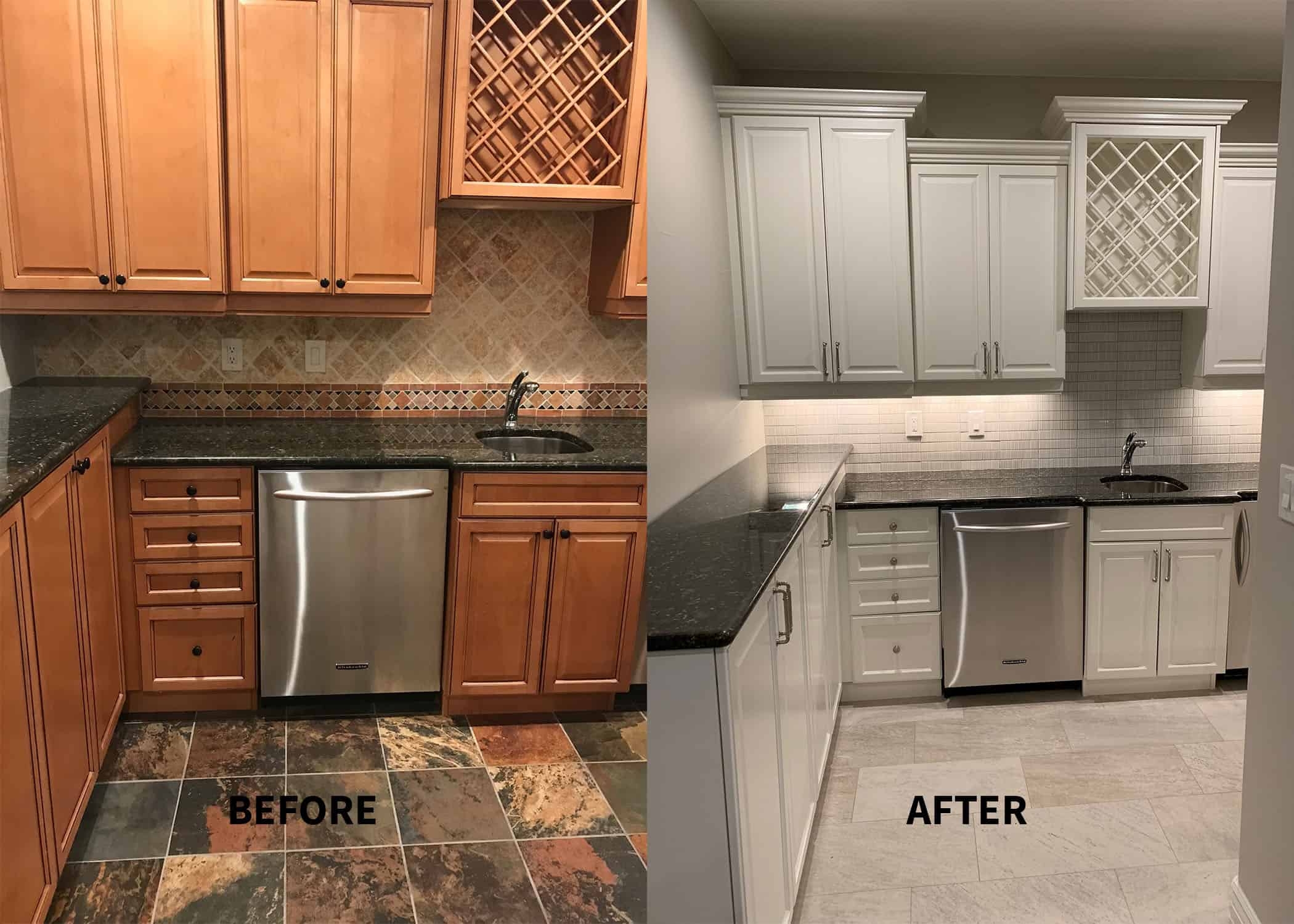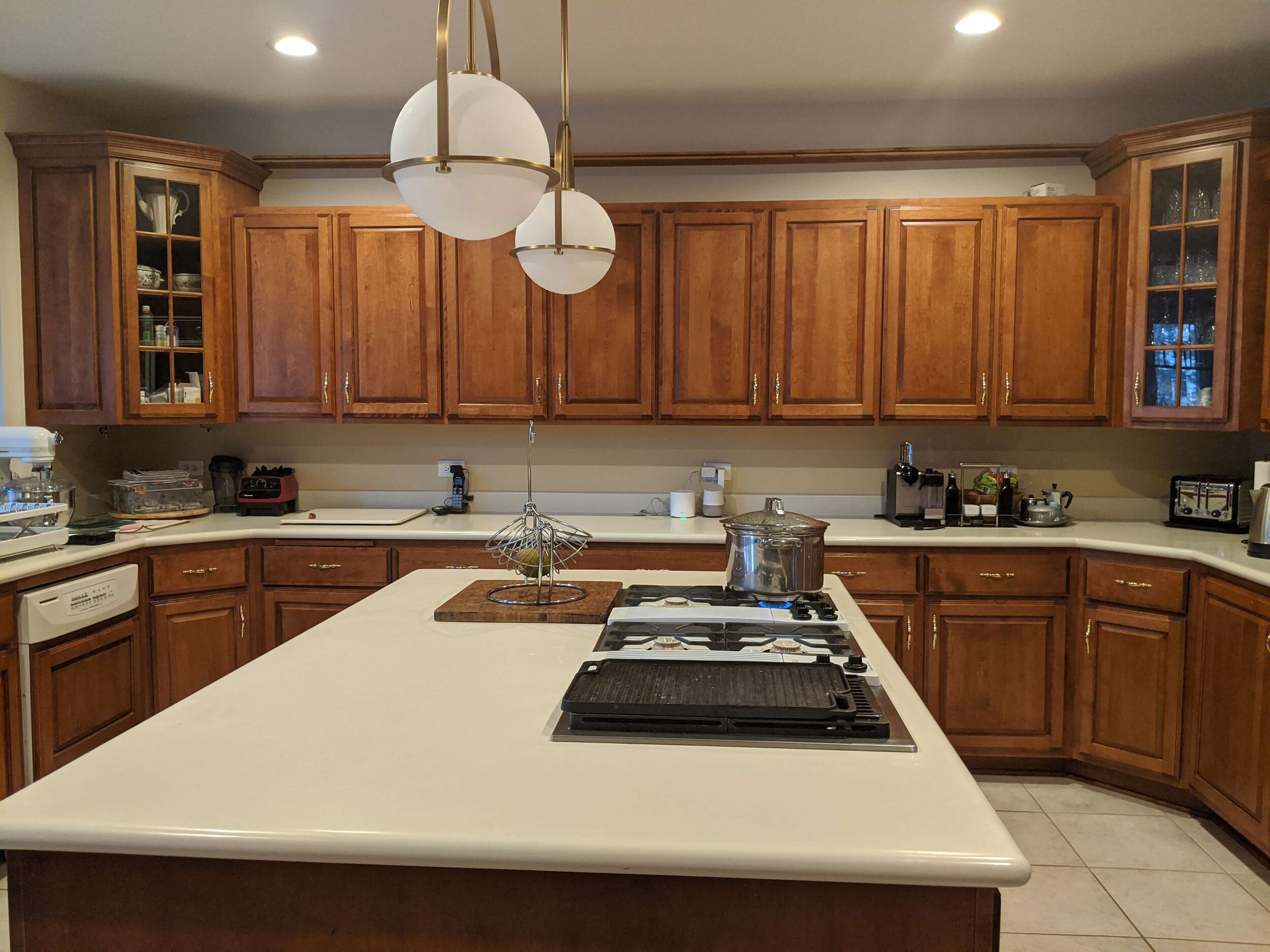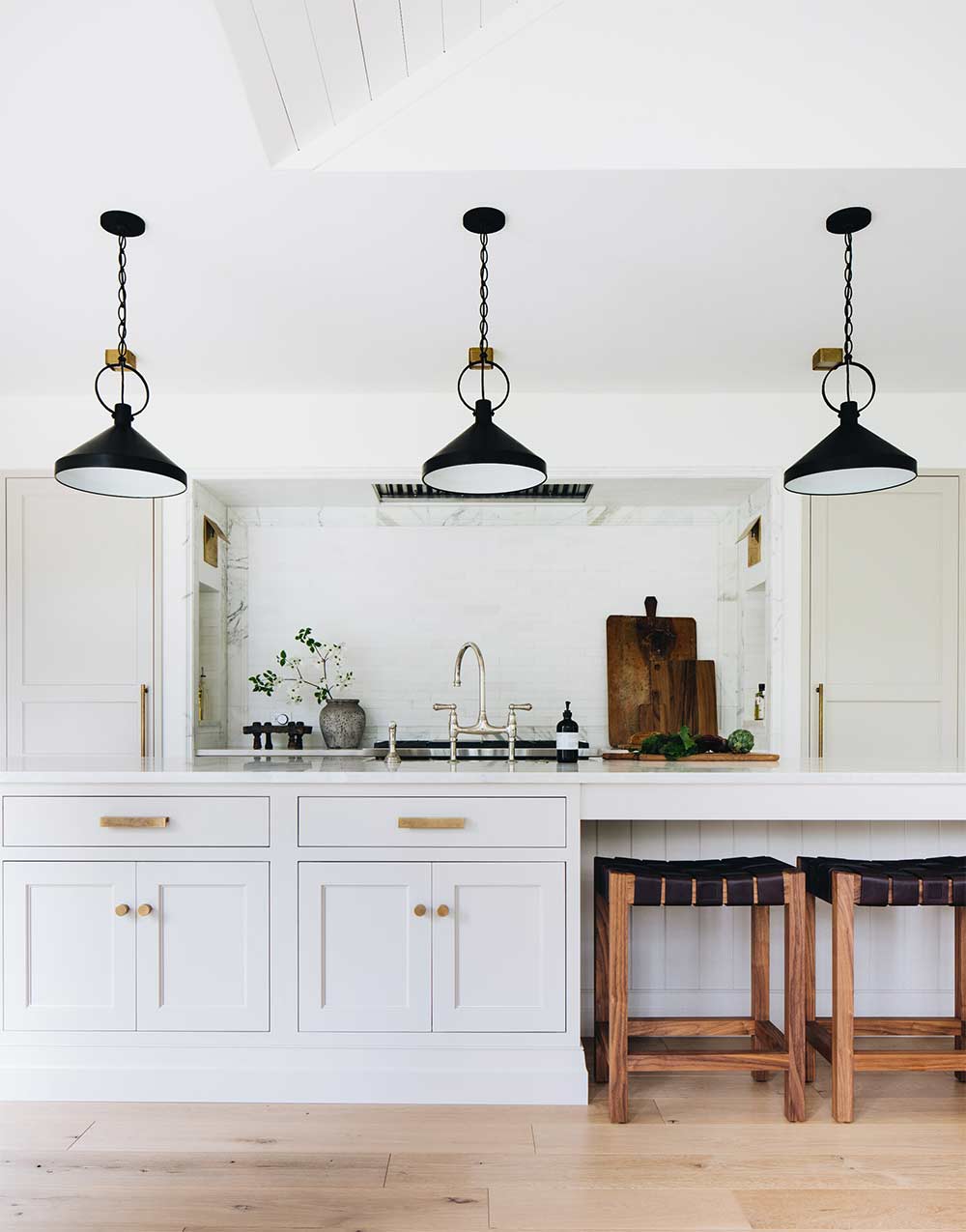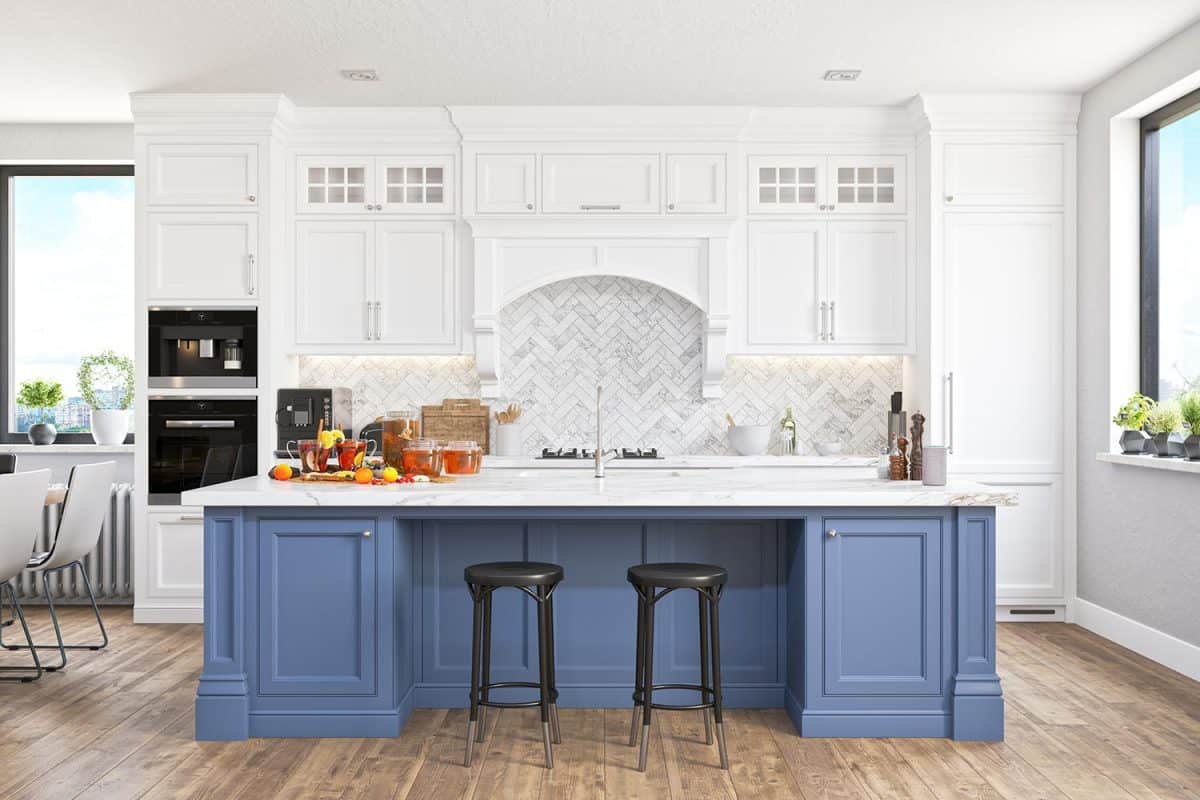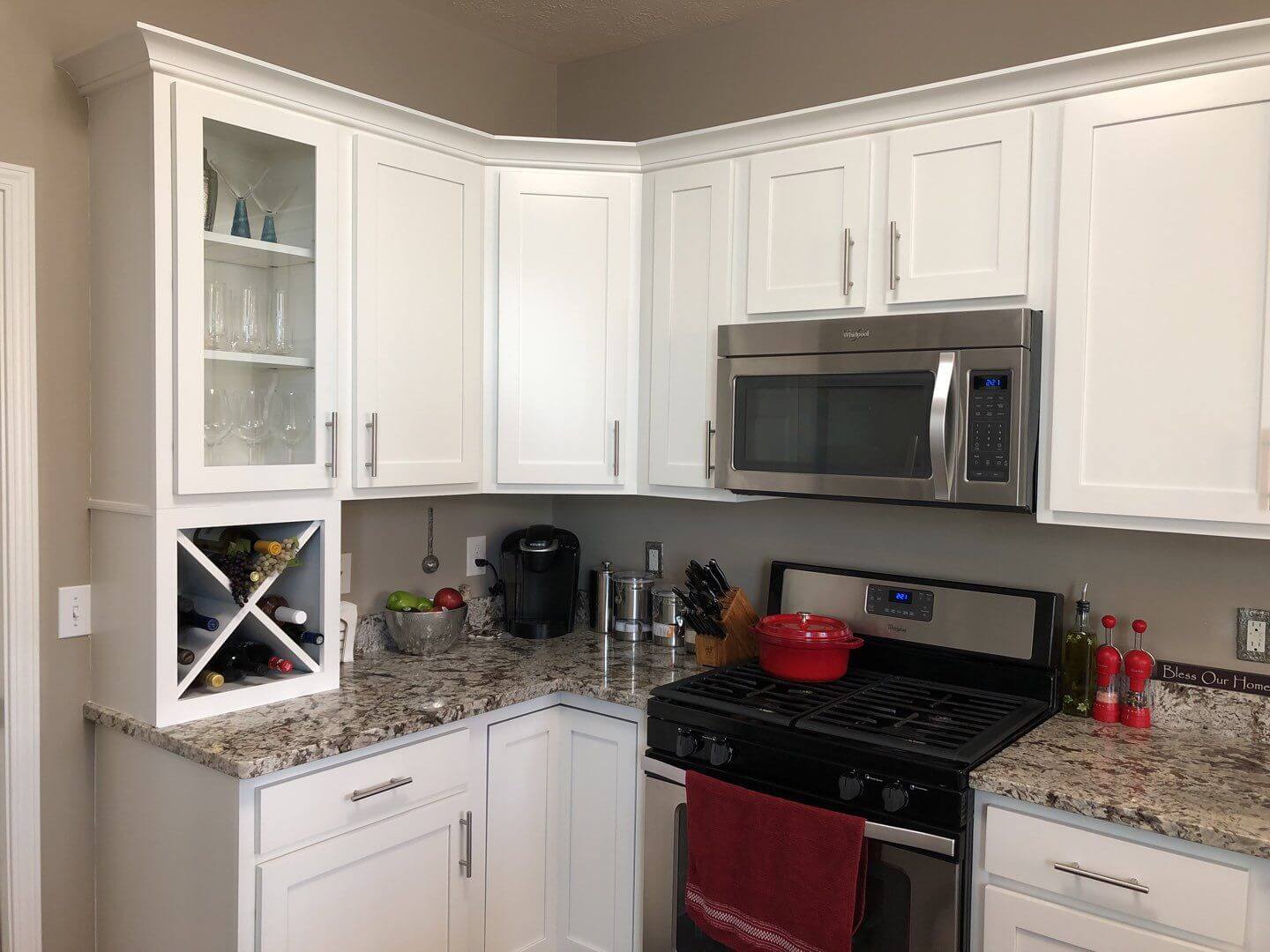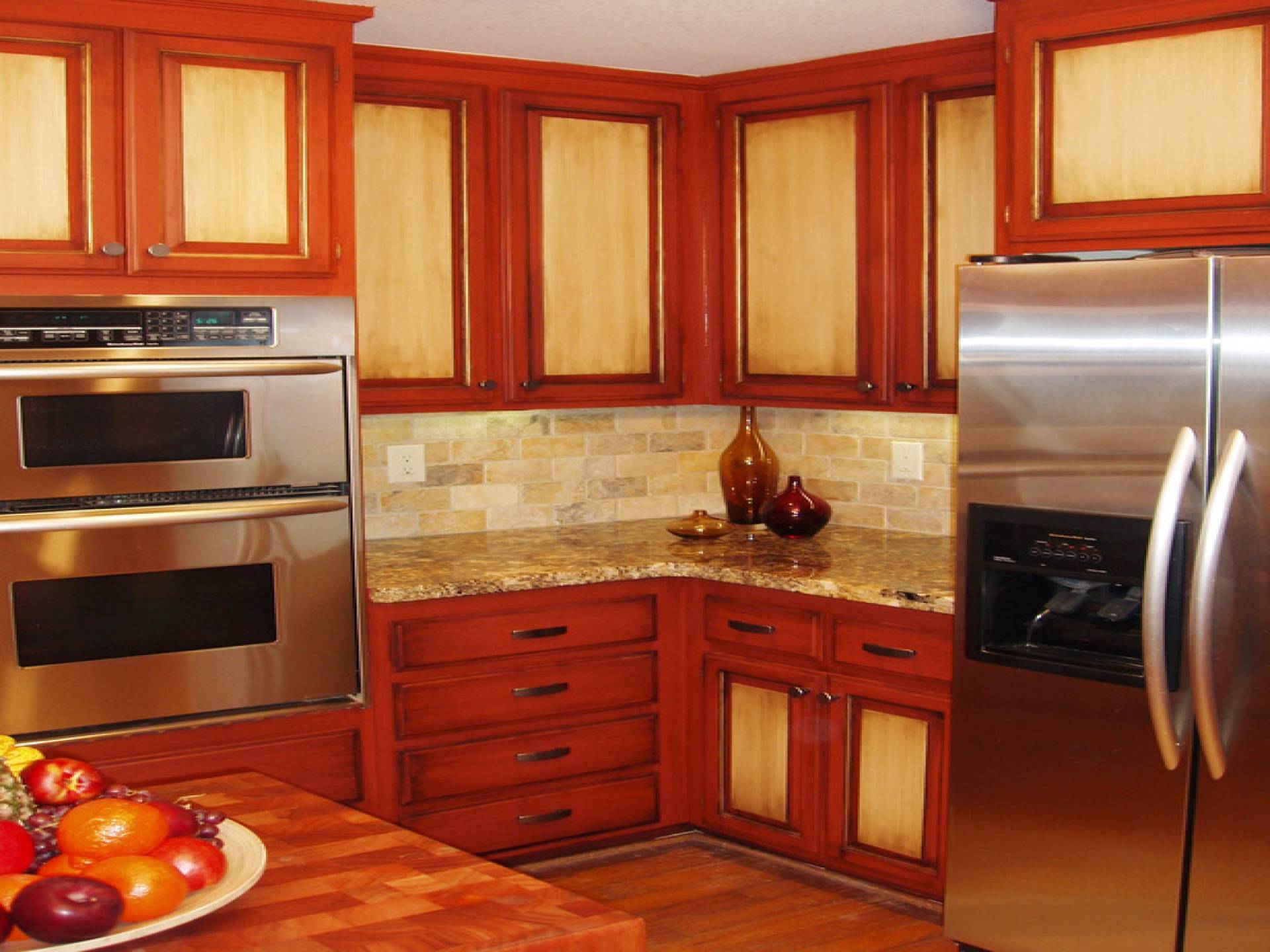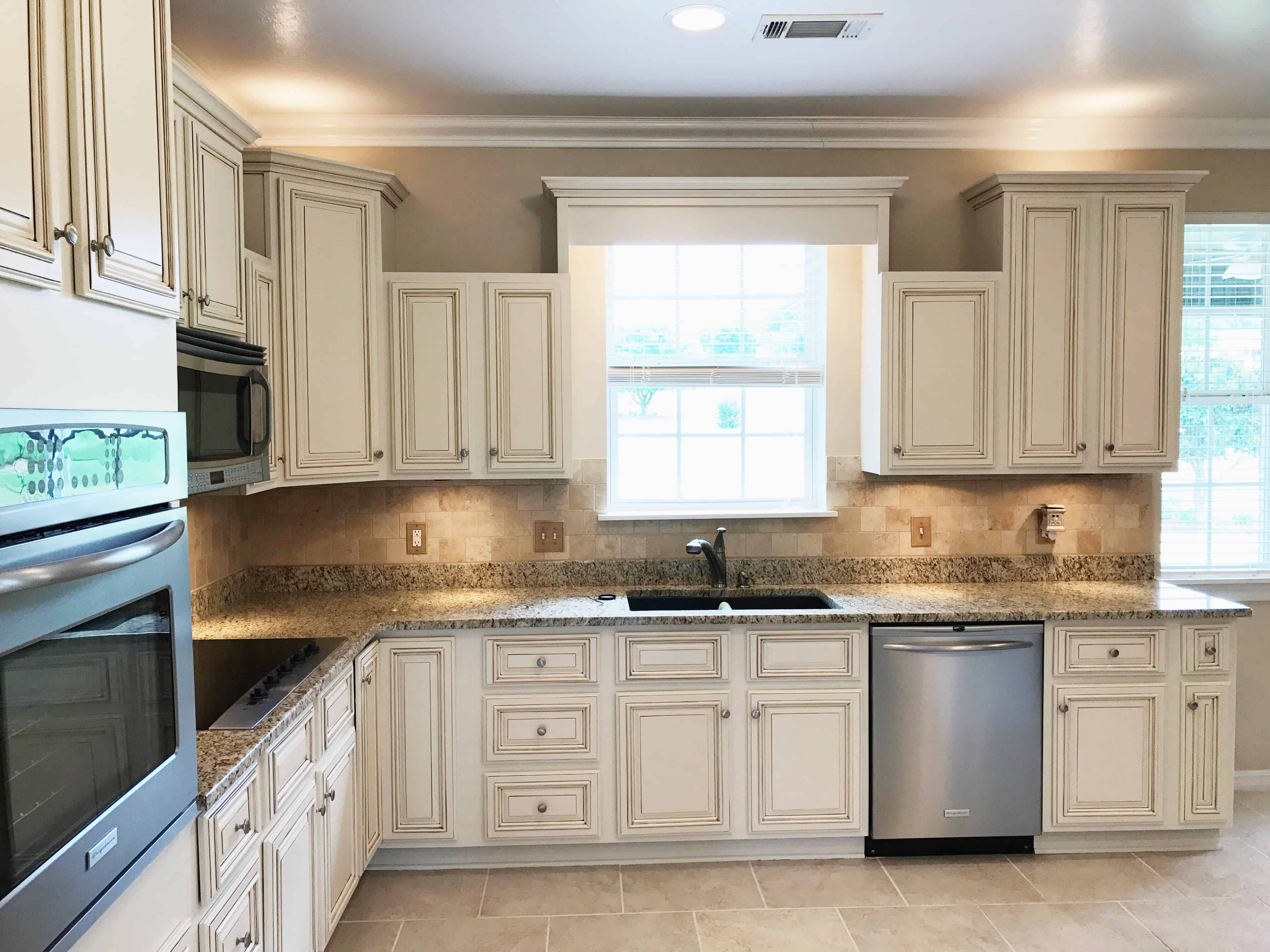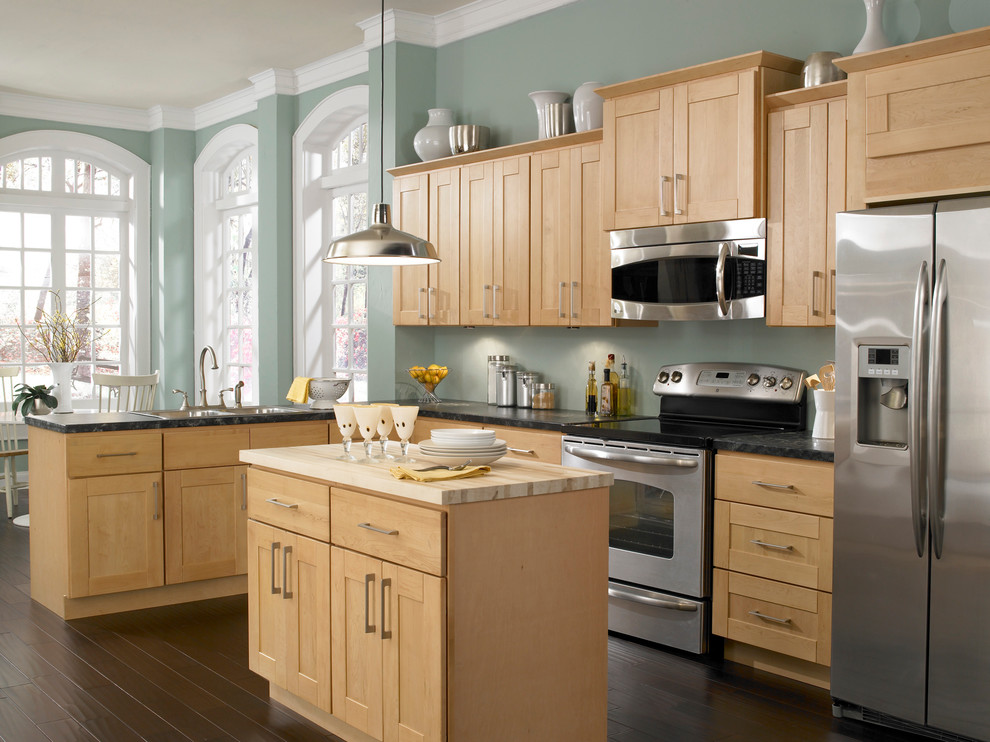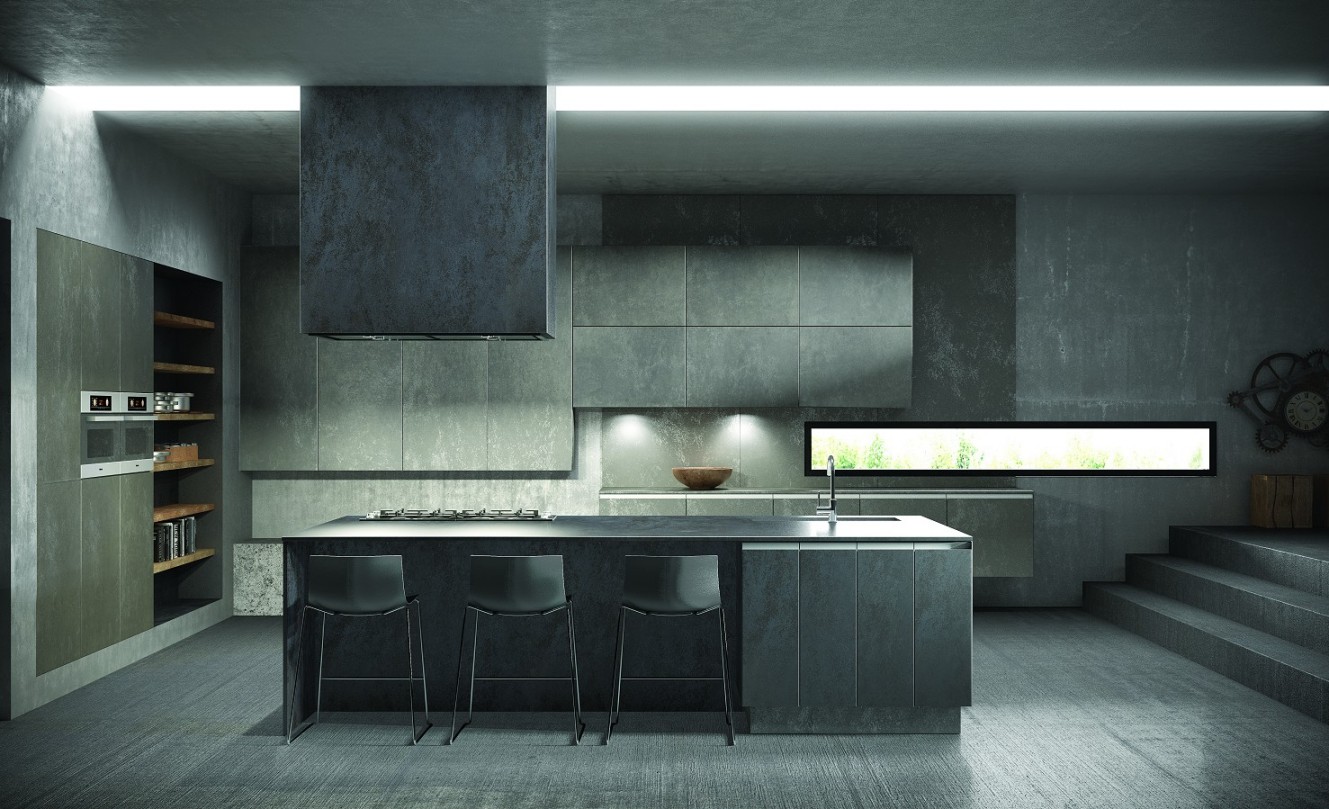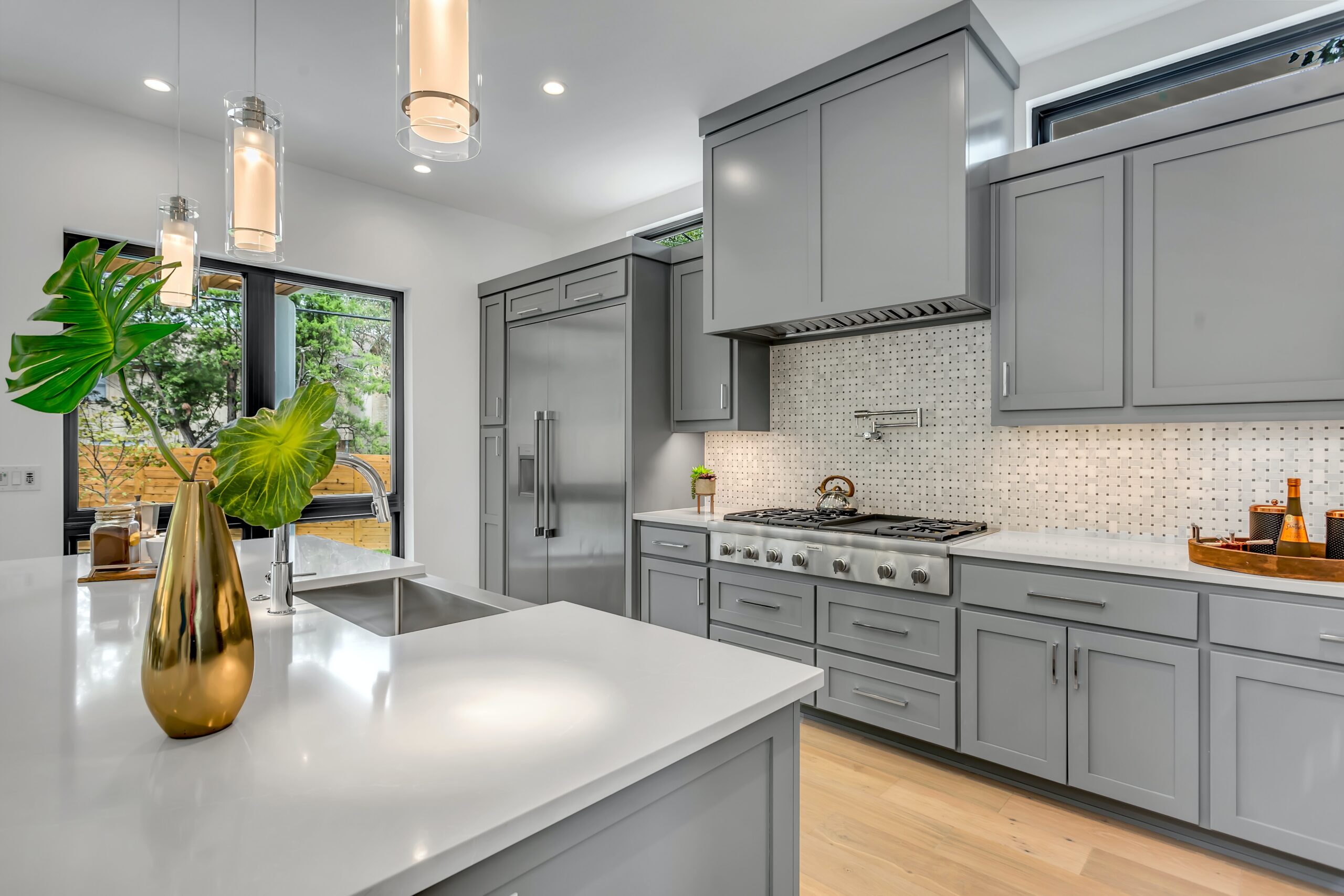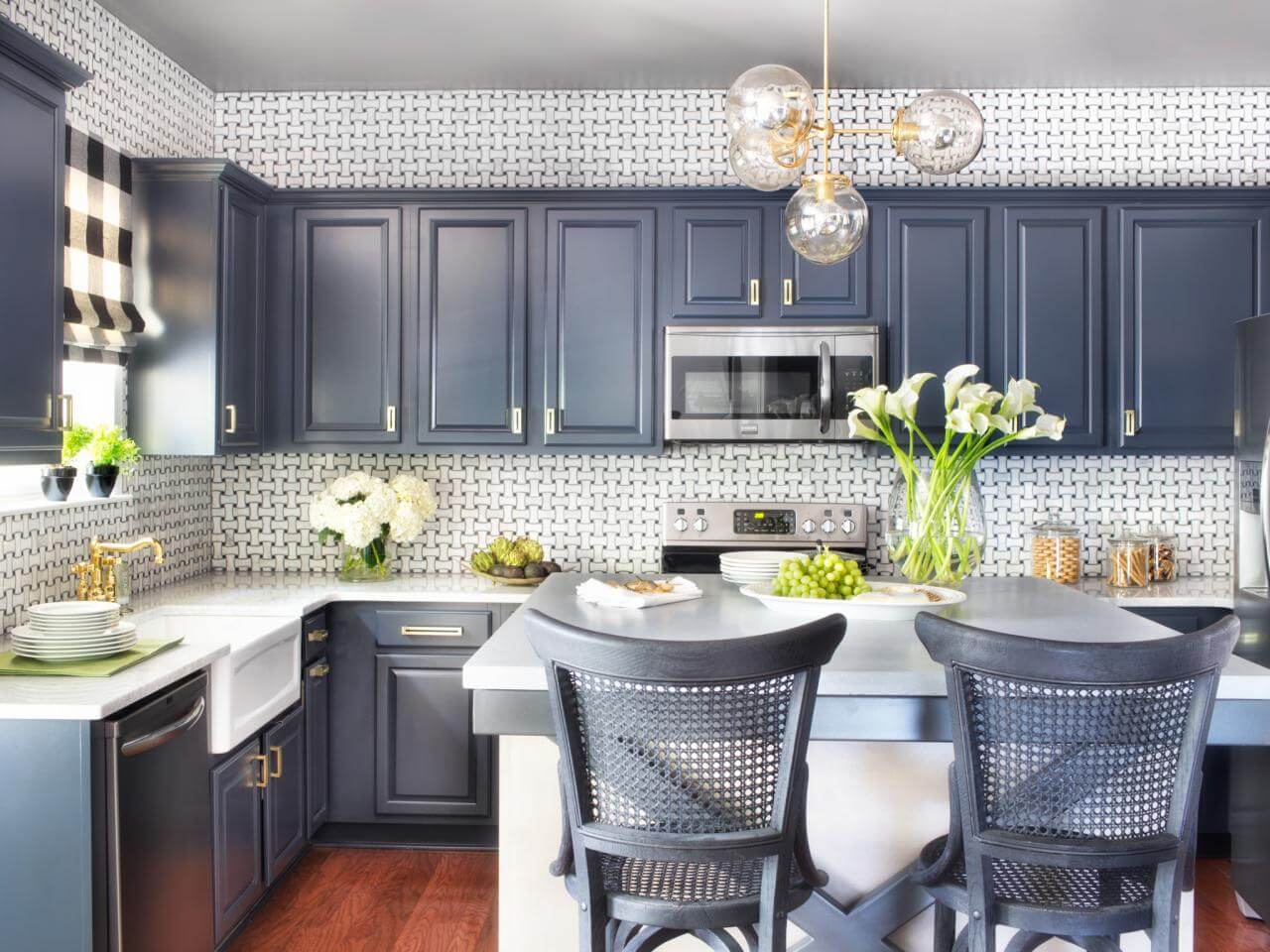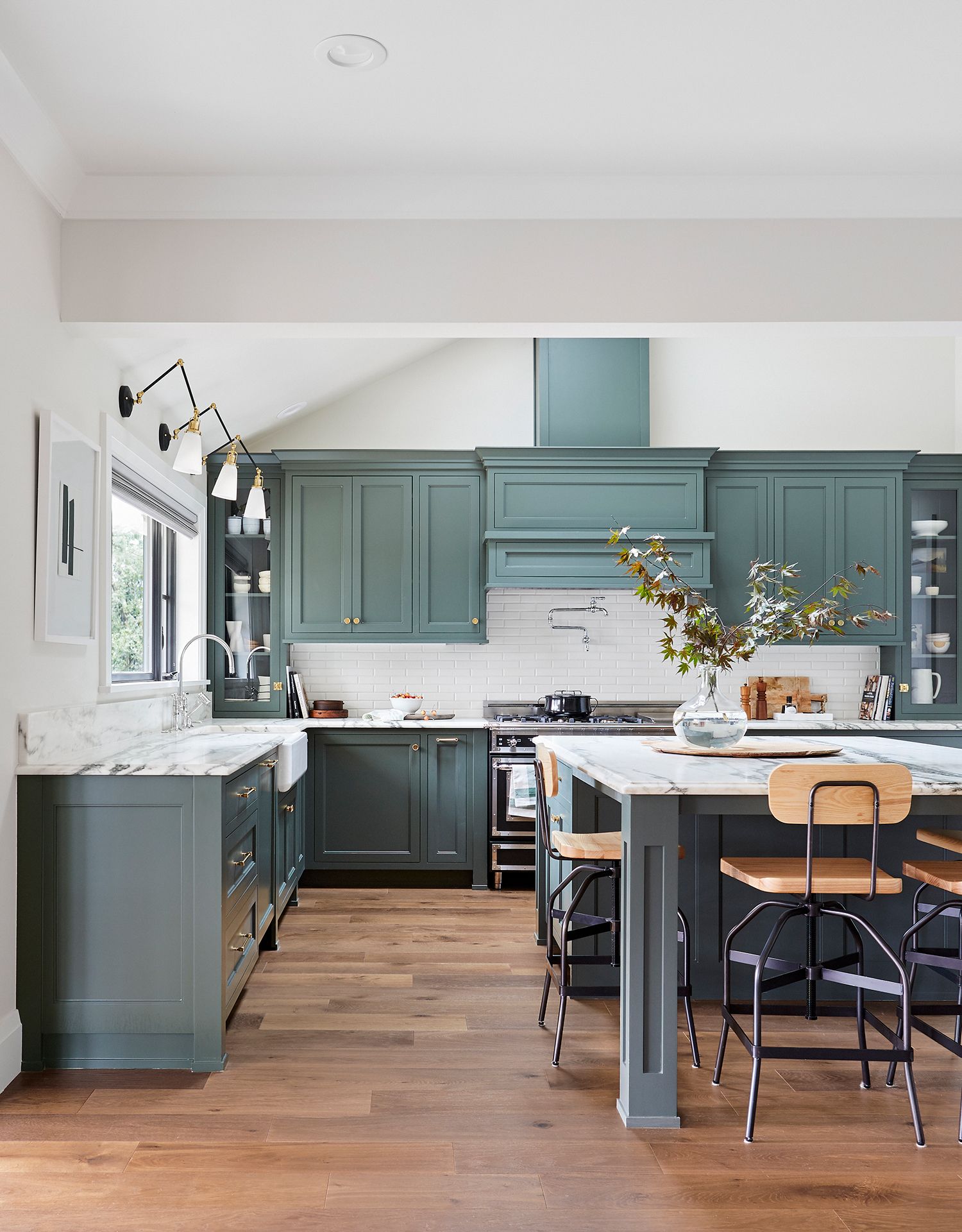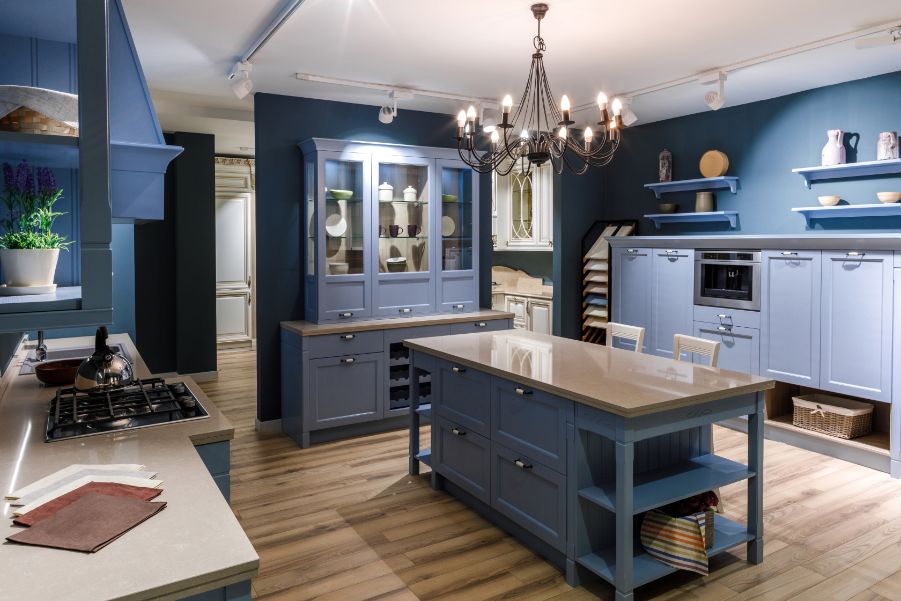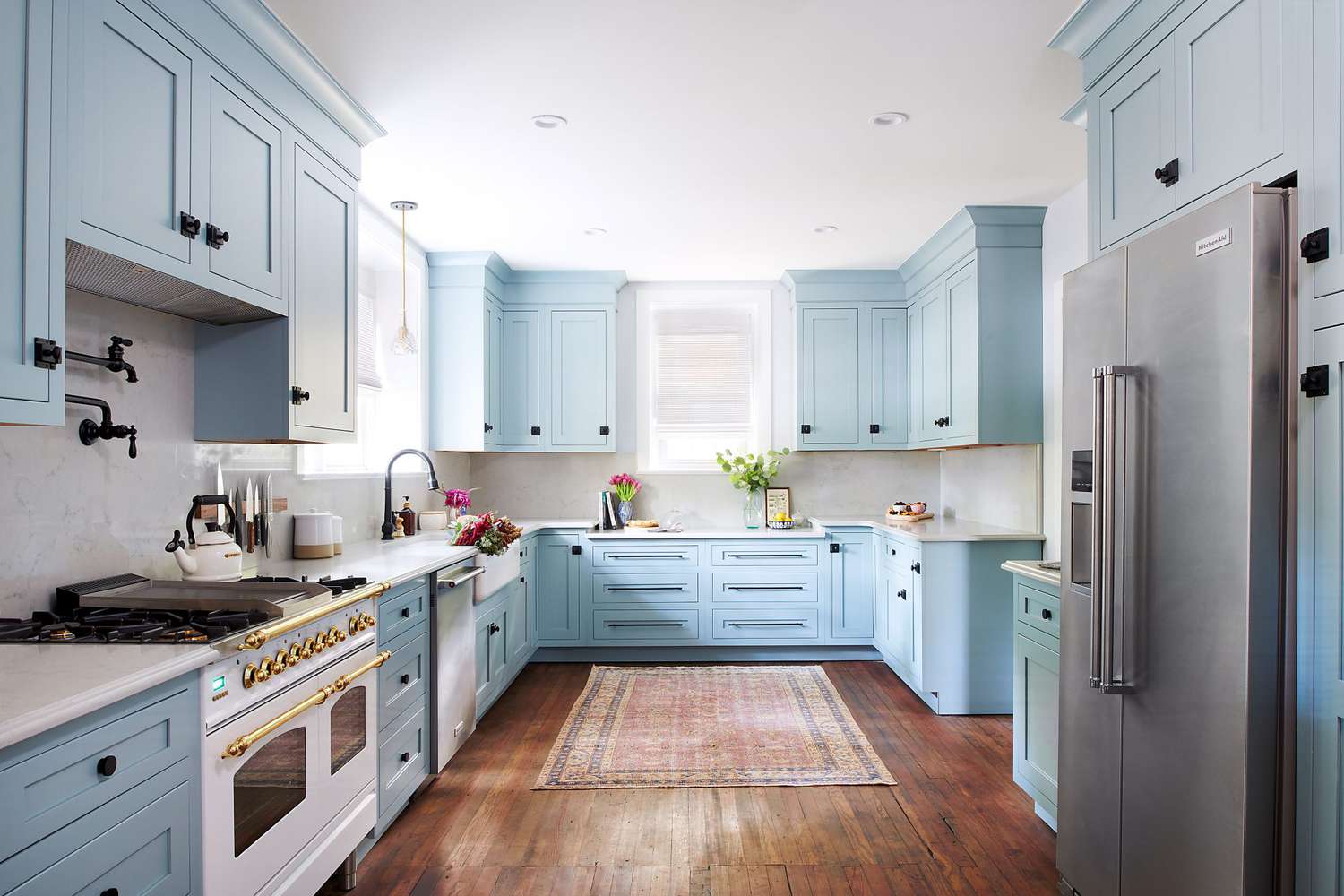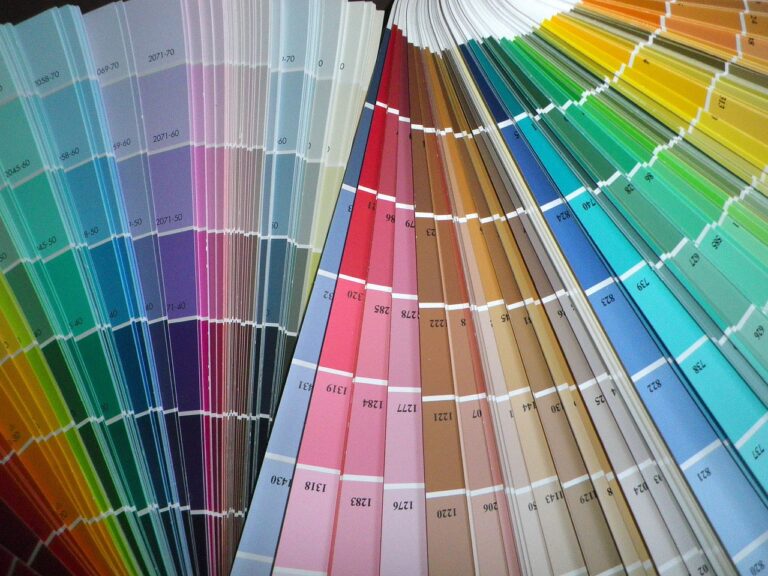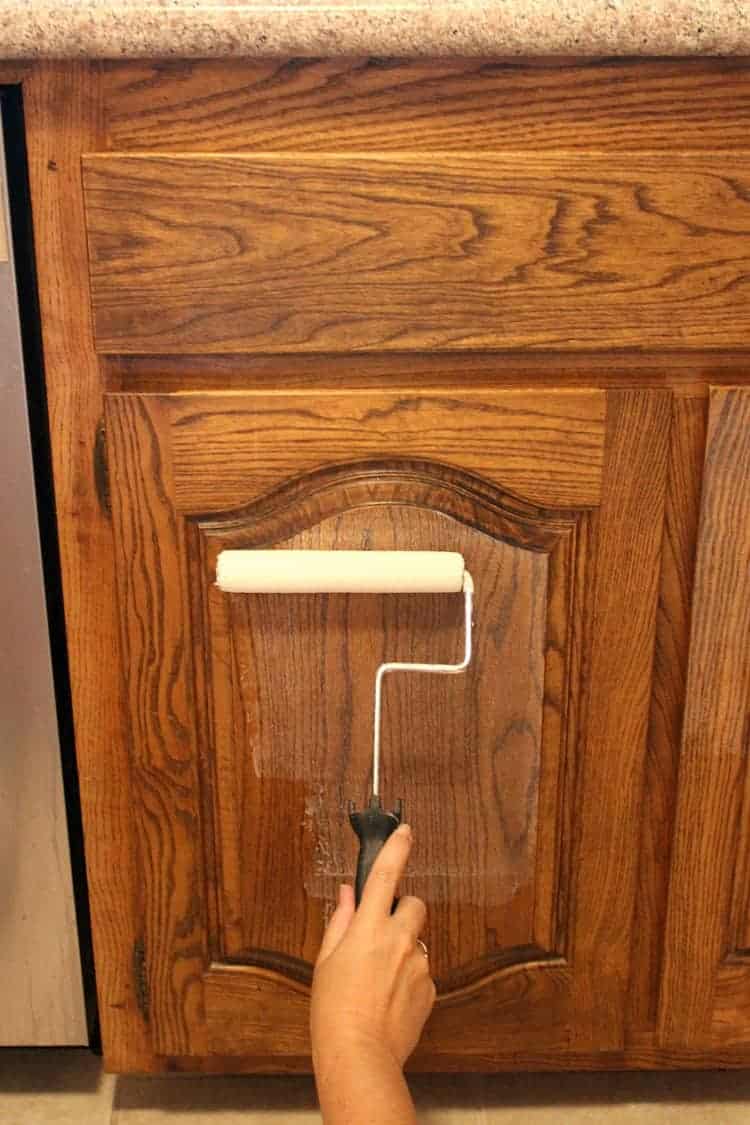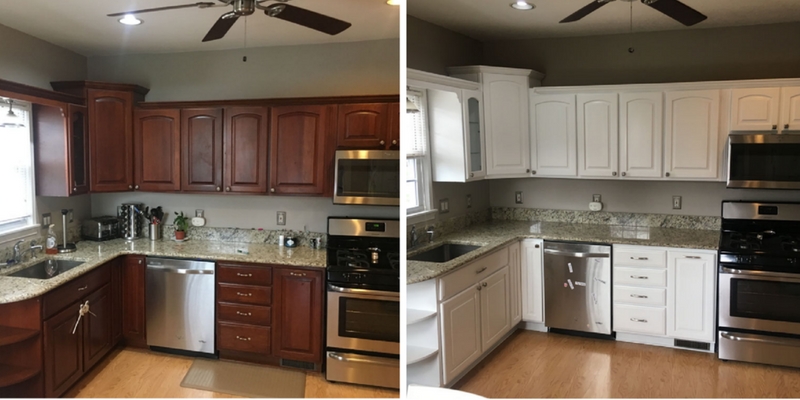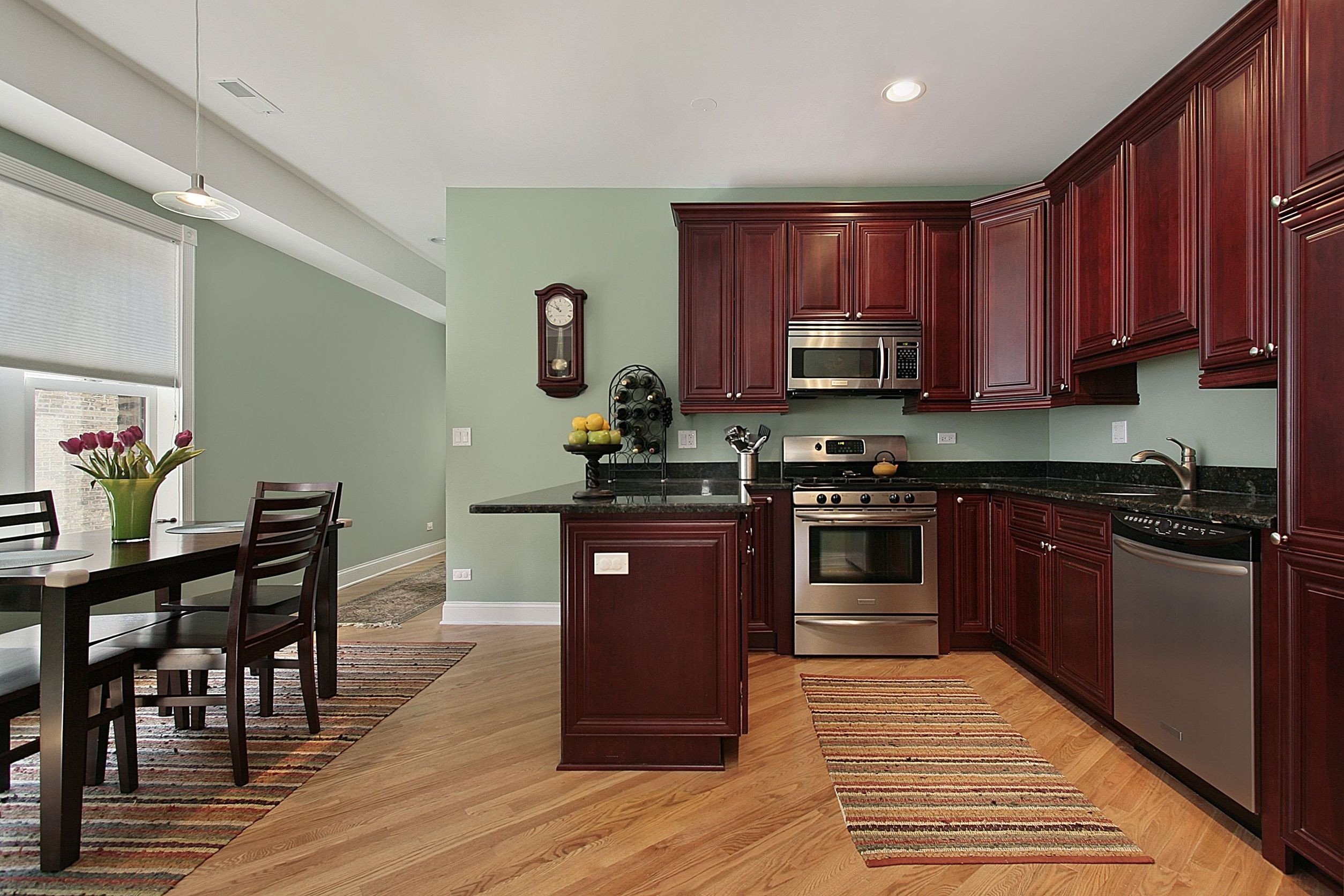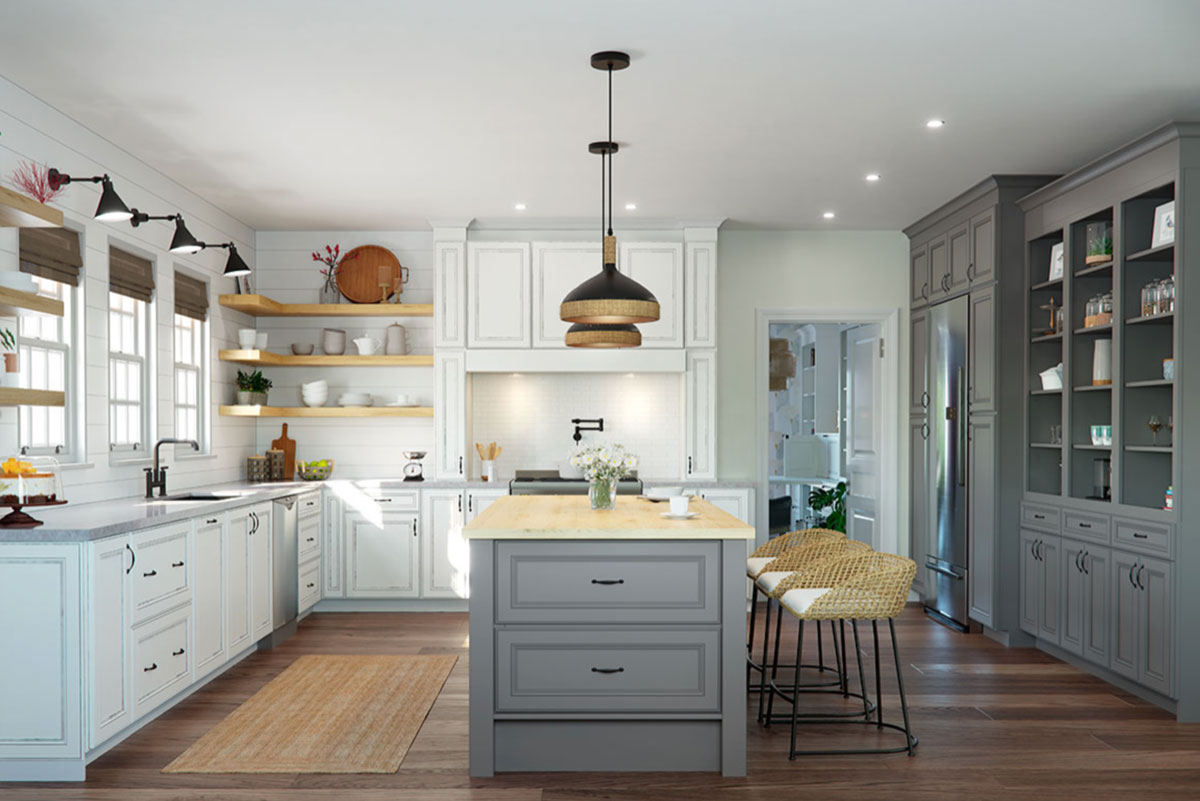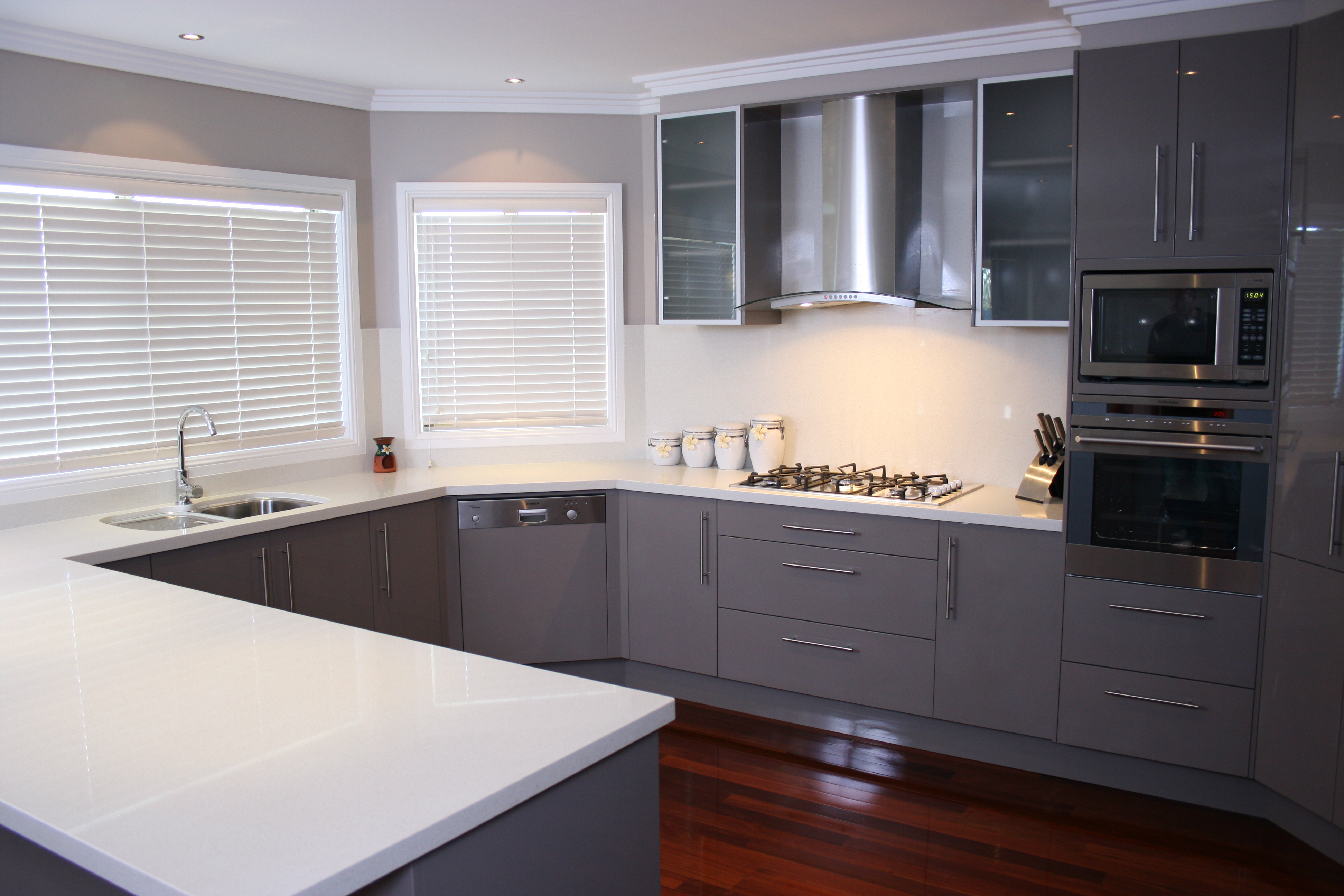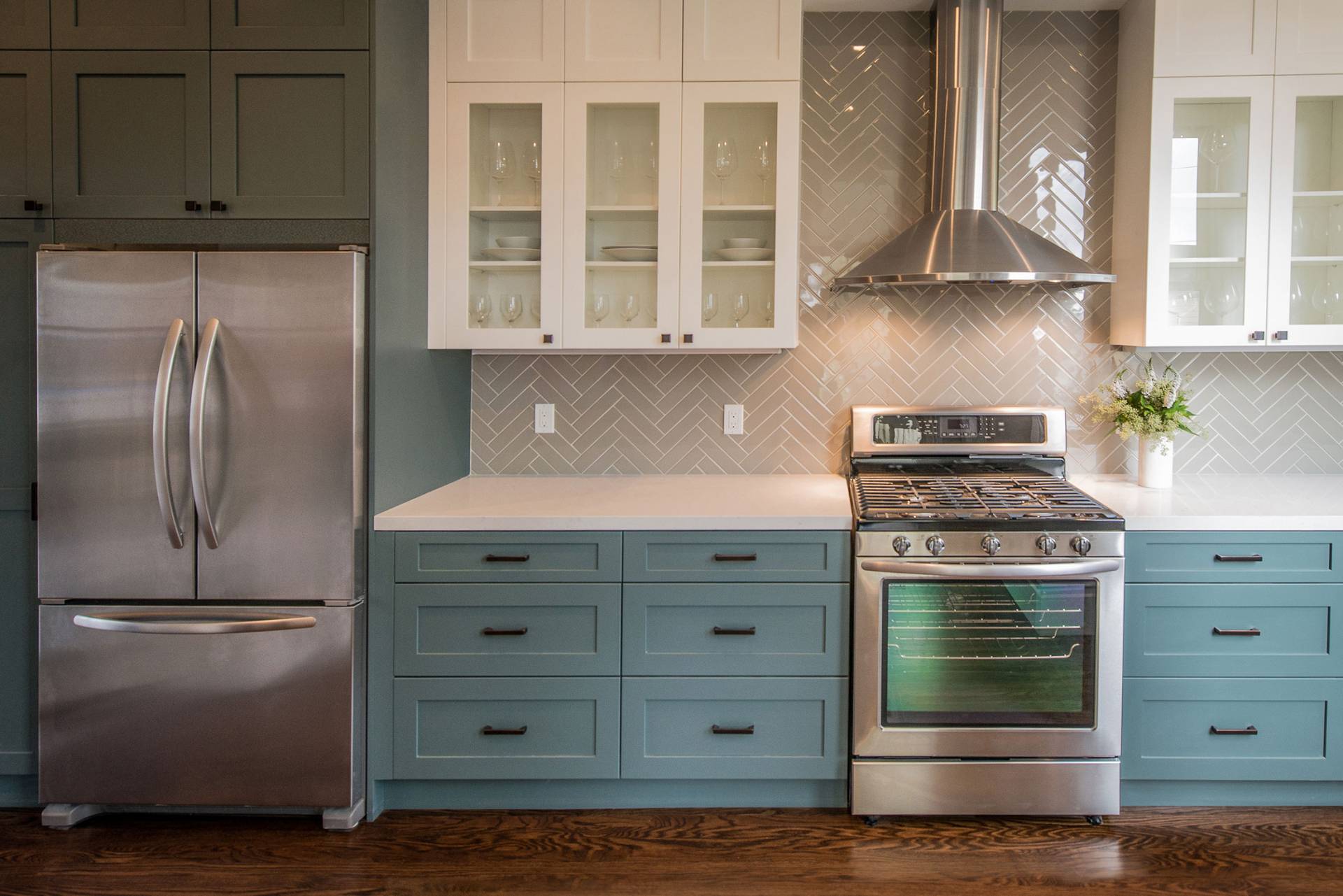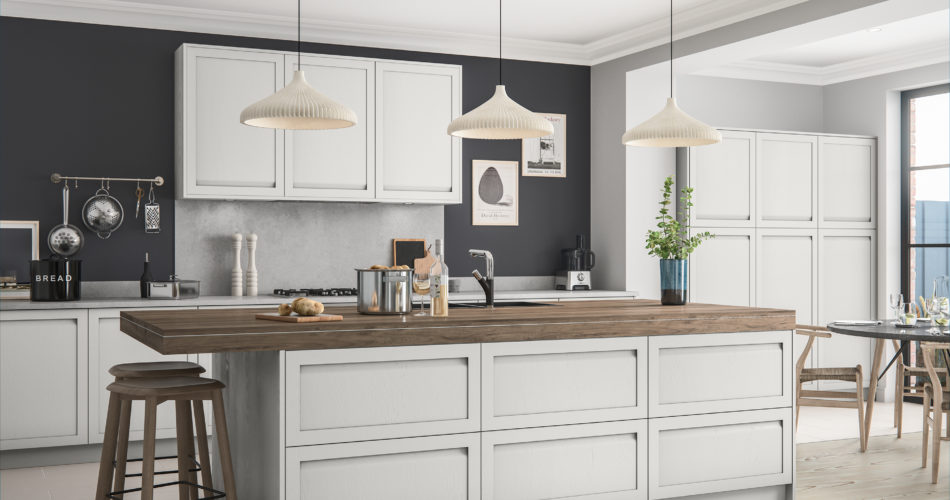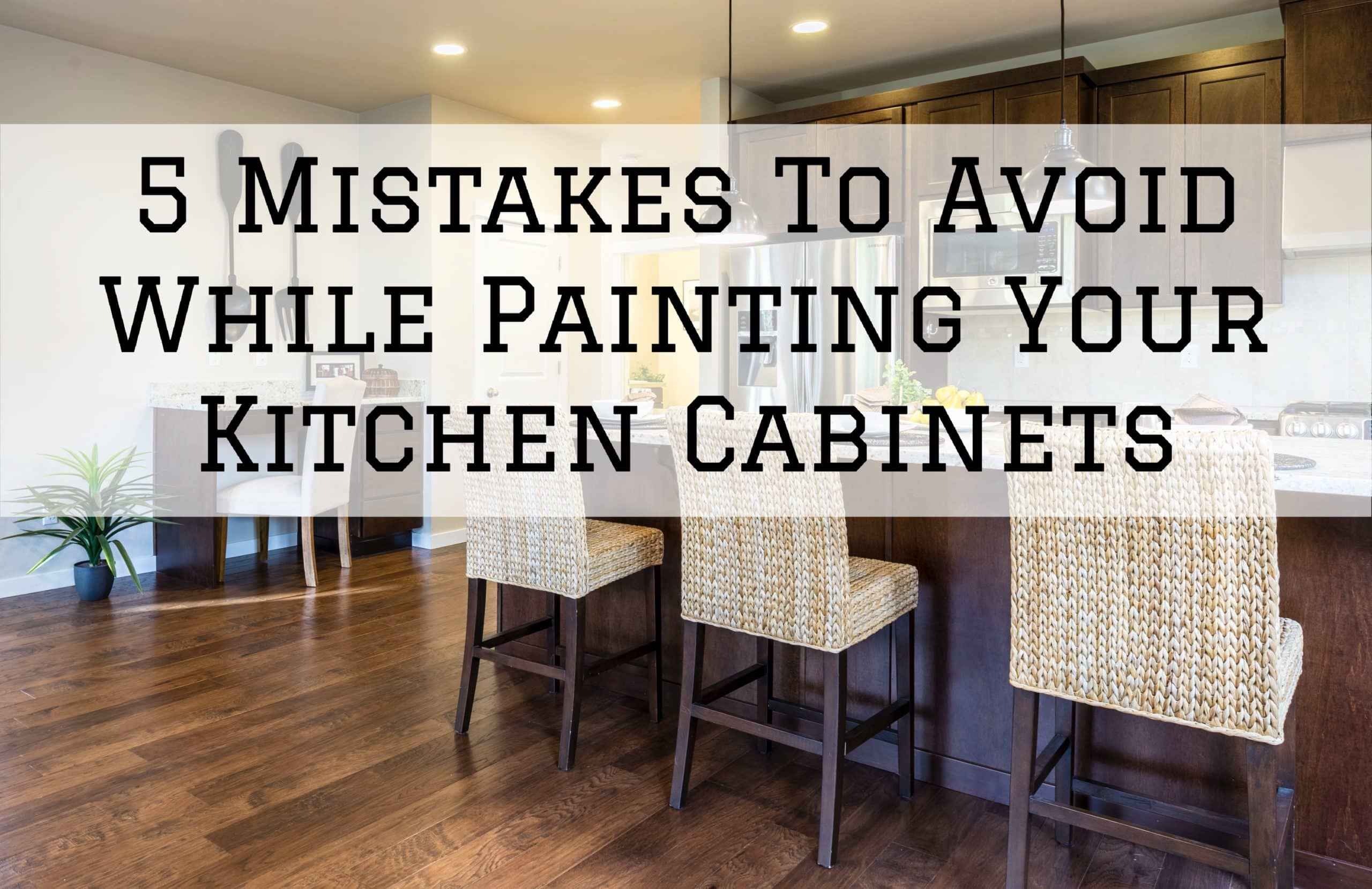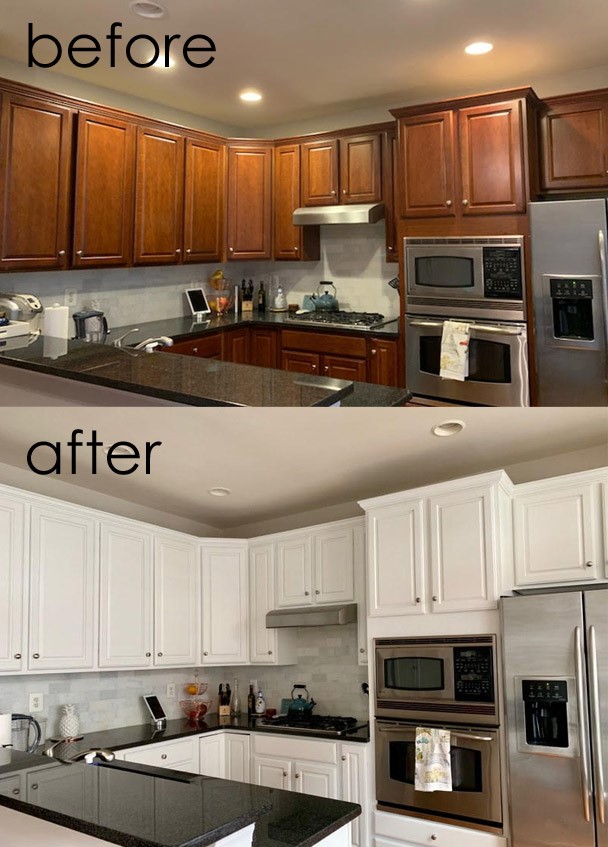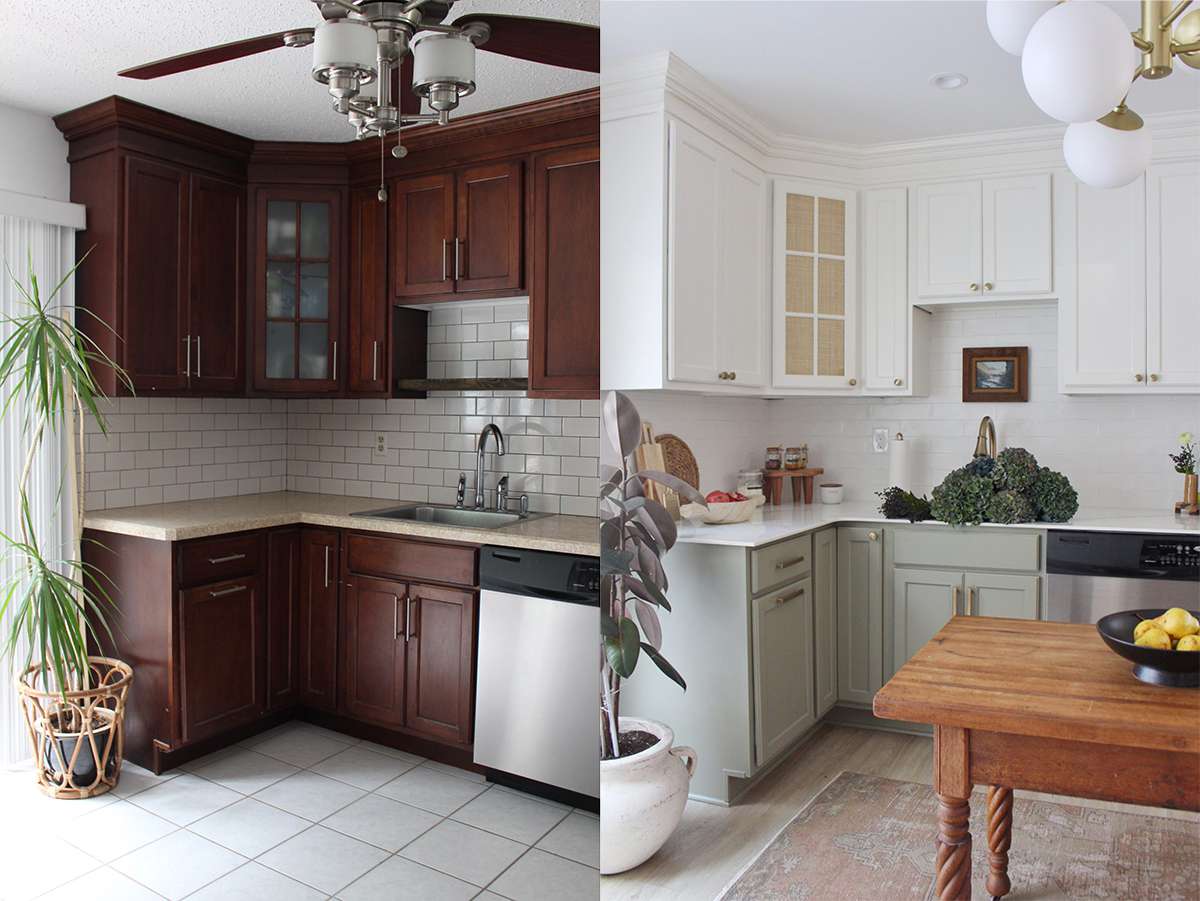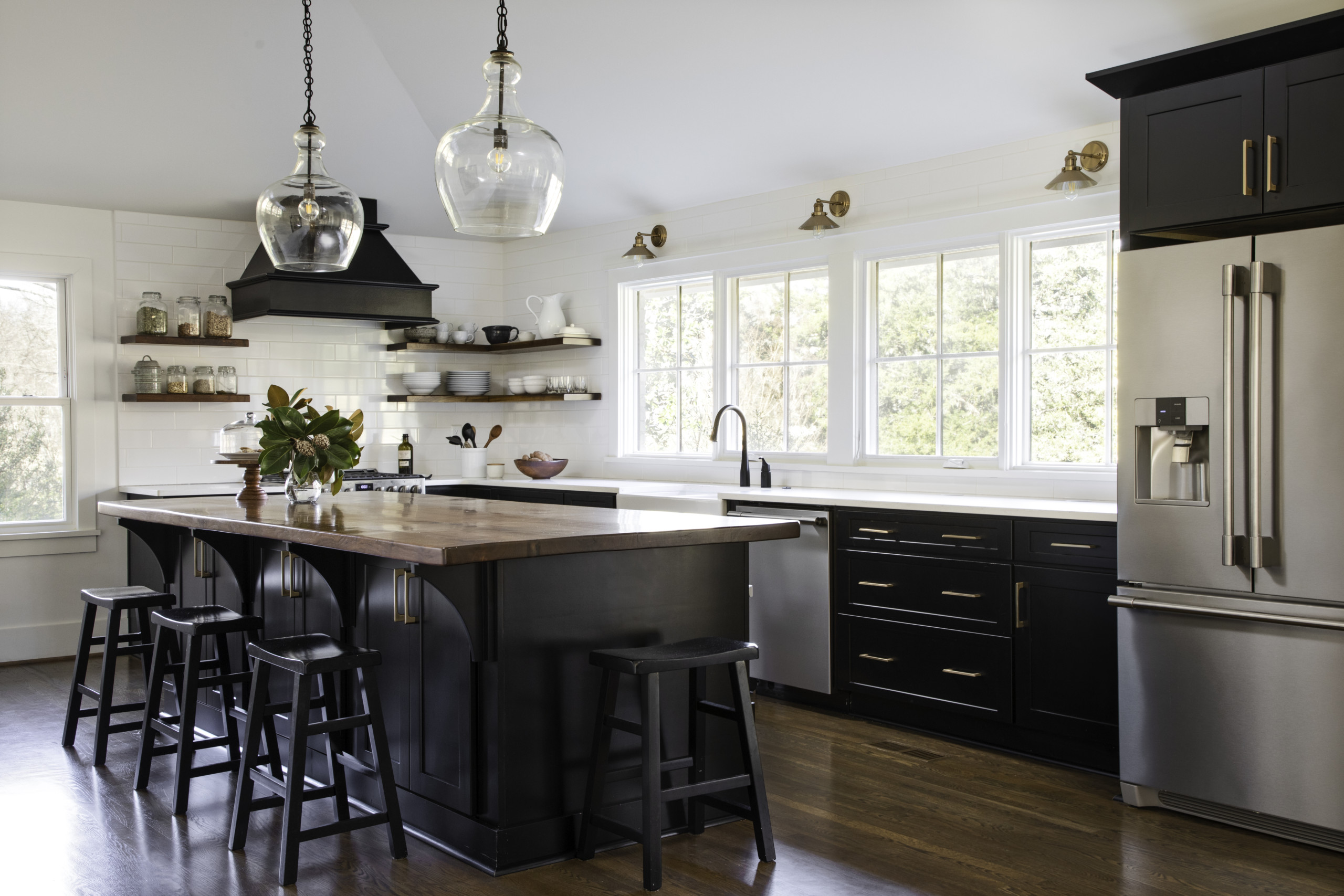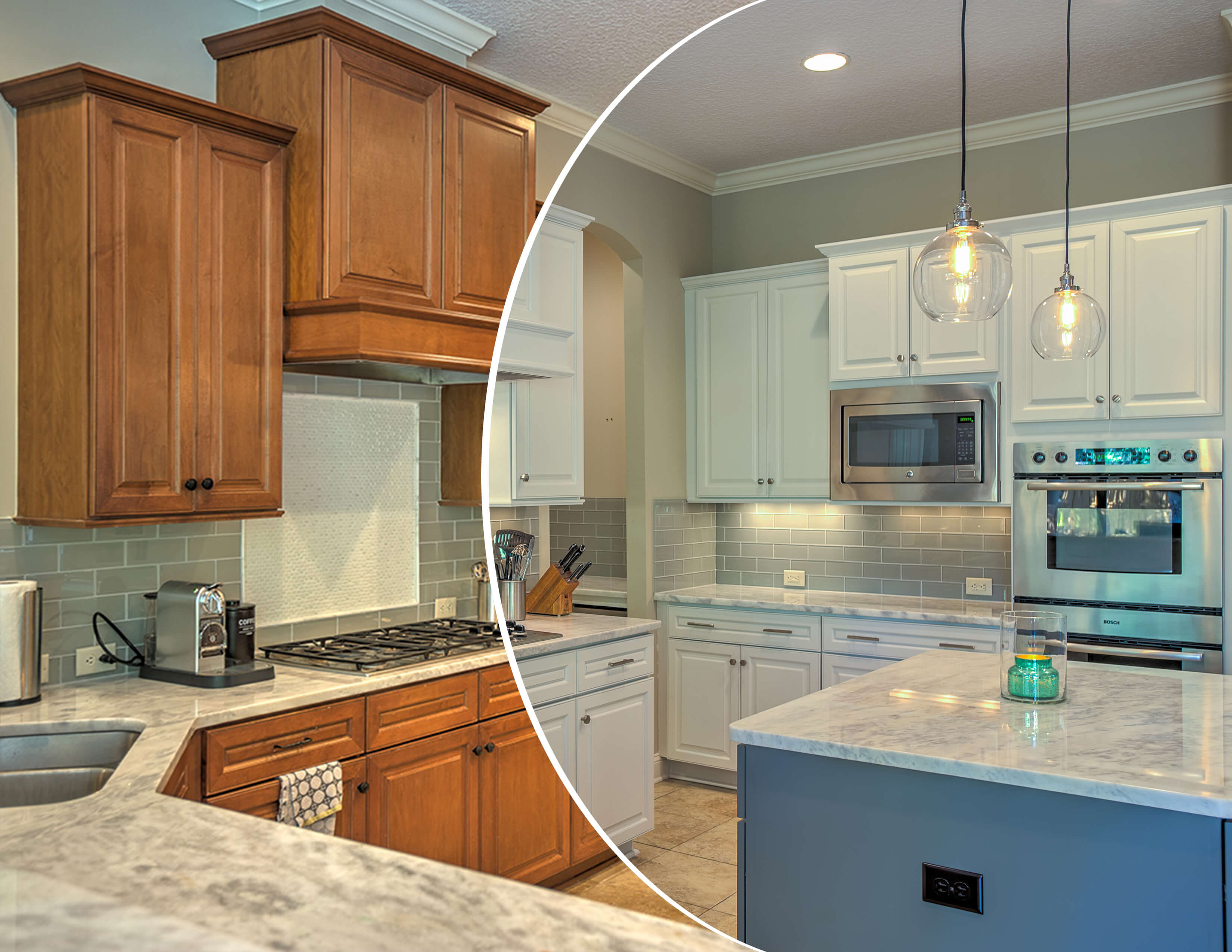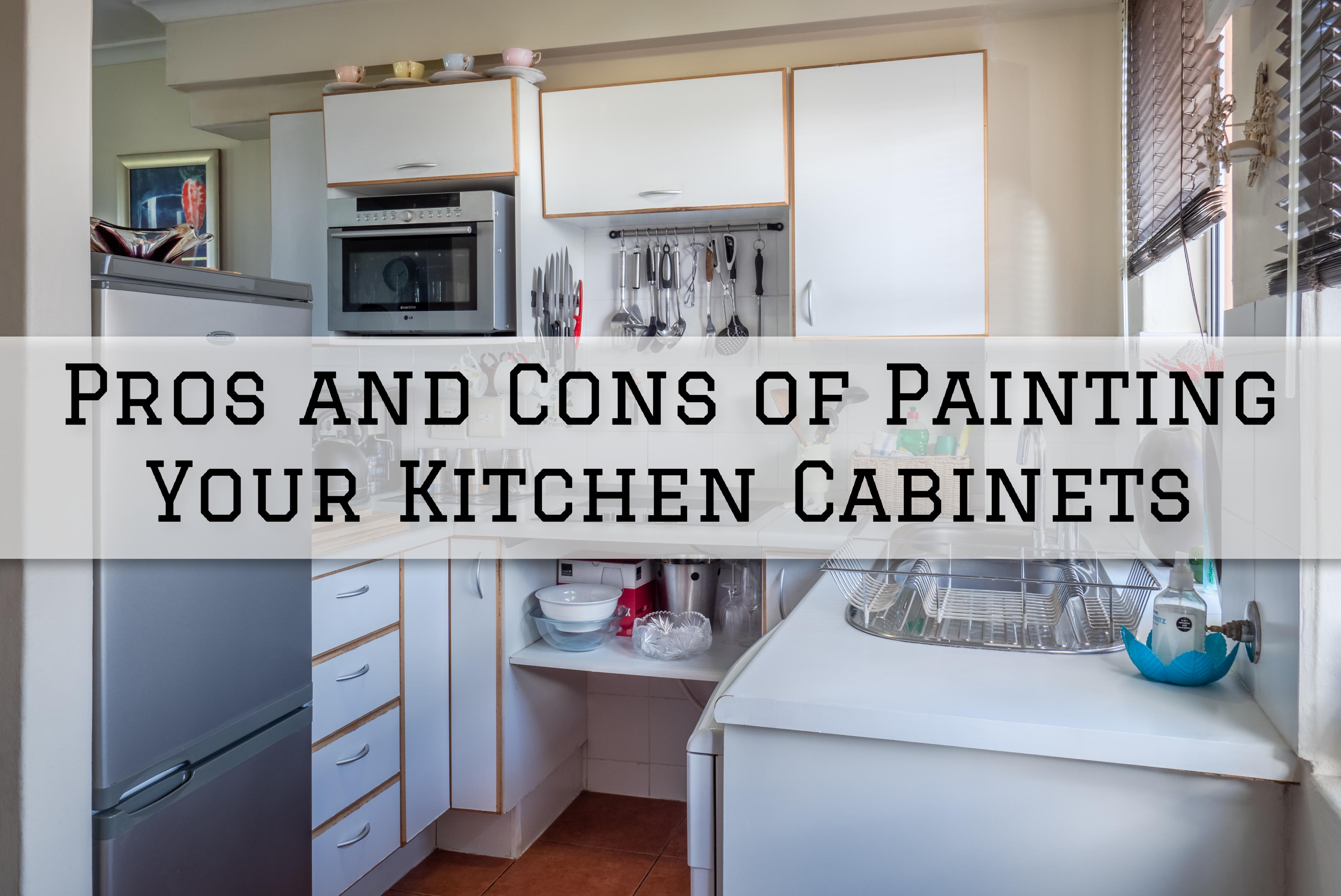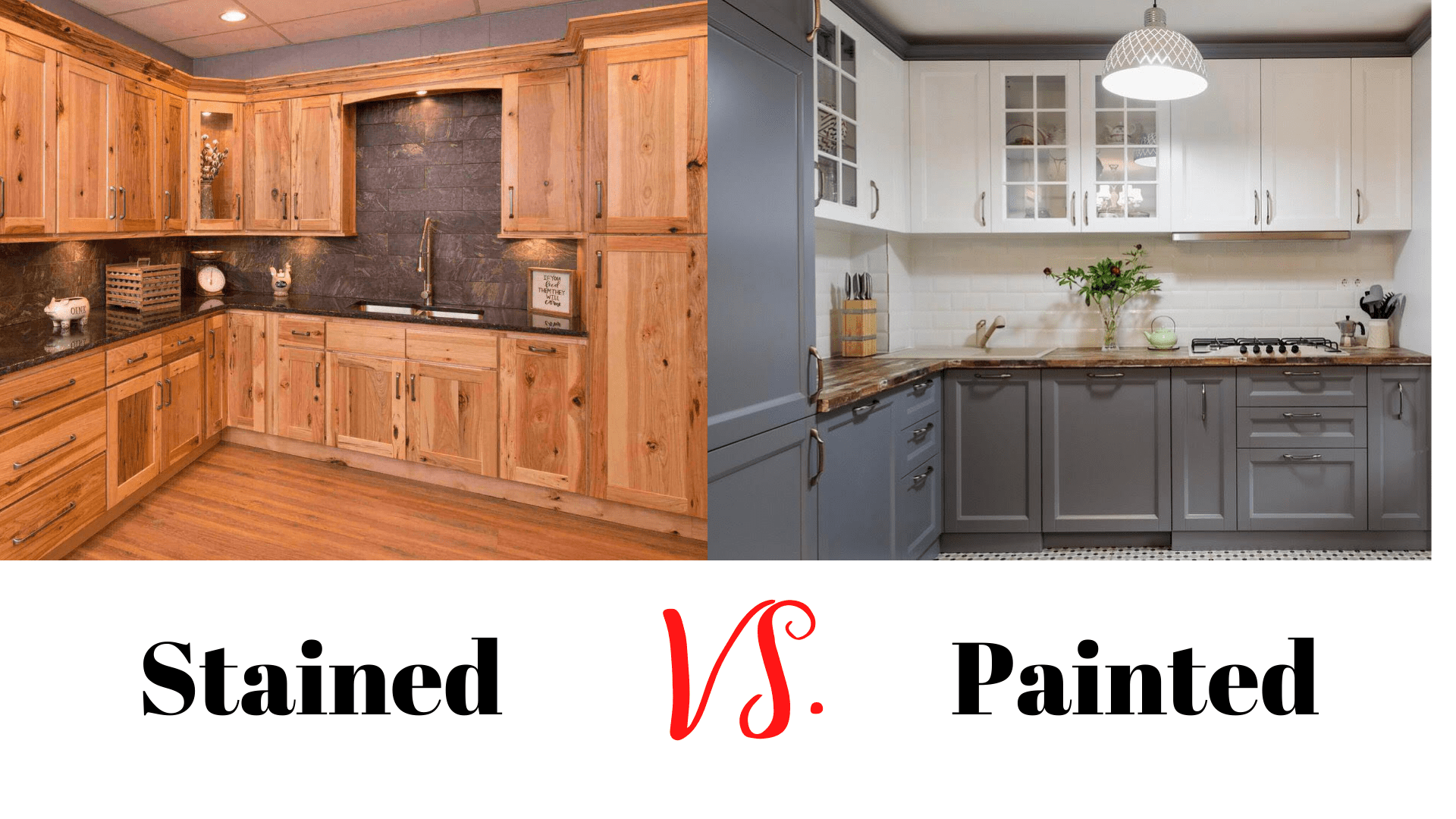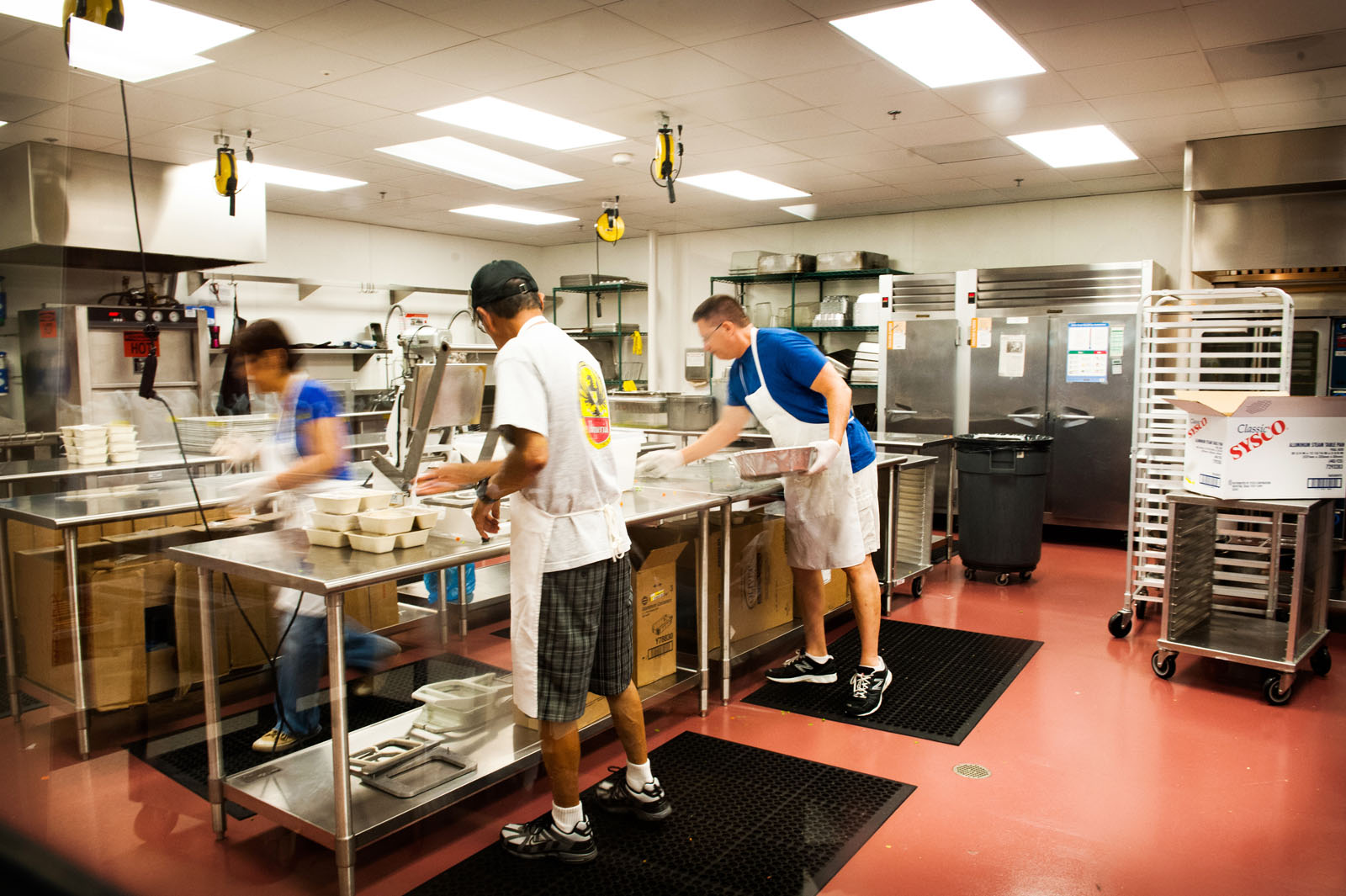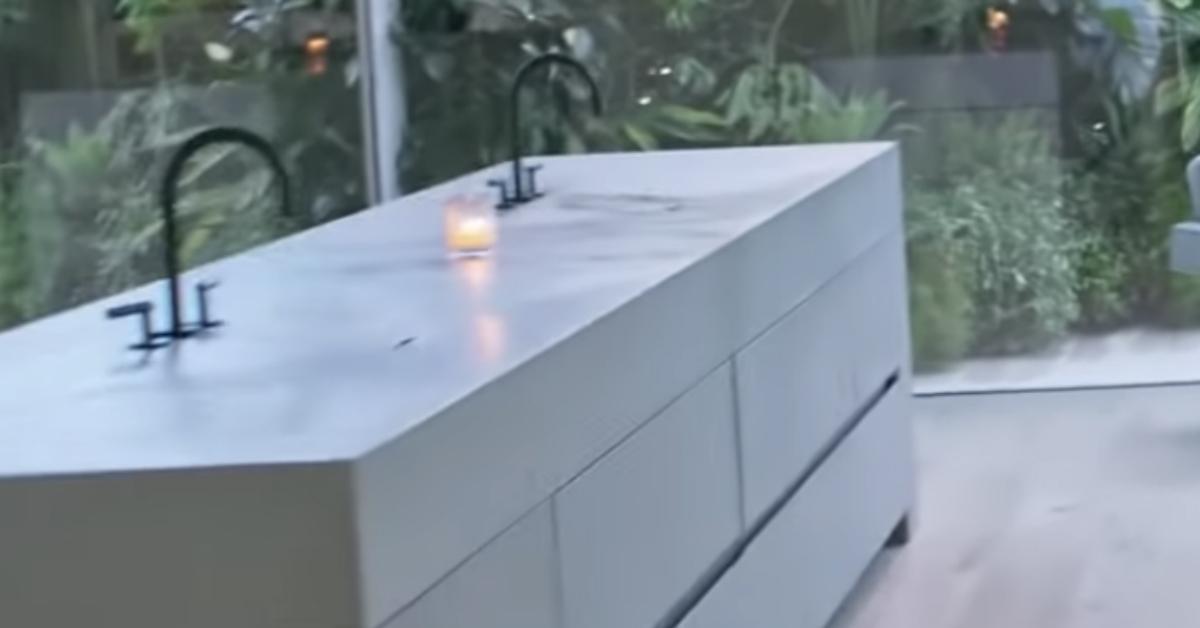If you’re looking to give your kitchen a fresh new look, painting the walls and cabinets can be a great way to achieve that. Not only is it cost-effective, but it also allows for endless possibilities in terms of color and style. However, painting both the walls and cabinets in the same color can be a bit tricky. That’s why we’ve put together this complete guide to help you achieve a cohesive and stylish look for your kitchen.Painting Kitchen Walls and Cabinets: A Complete Guide
The key to successfully painting your kitchen walls and cabinets the same color is proper preparation. Before you begin, make sure to thoroughly clean and de-grease both the walls and cabinets. This will ensure that the paint adheres properly and results in a smooth finish. Next, cover any areas that you don’t want to paint, such as countertops or appliances, with plastic sheeting or painter’s tape. Then, lightly sand the surfaces to create a smooth base for the paint to adhere to. After sanding, wipe away any dust with a damp cloth. Now it’s time to prime! Use a high-quality primer specifically designed for use on kitchen surfaces. This will help the paint bond to the surfaces and prevent any stains or discoloration from showing through. Allow the primer to dry completely before moving on to the next step.How to Paint Kitchen Cabinets and Walls the Same Color
When it comes to choosing a color for your kitchen walls and cabinets, there are a few do’s and don’ts to keep in mind. Firstly, do consider the overall color scheme and style of your kitchen. If you have a small kitchen, it’s best to stick to light or neutral shades to make the space appear larger. On the other hand, if you have a larger kitchen, you can be more adventurous with darker or bolder colors. Don’t be afraid to mix and match different shades of the same color for a more dynamic look. For example, you can paint your walls a light blue and your cabinets a darker shade of blue for a subtle contrast. However, do make sure the colors complement each other and don’t clash. Lastly, don’t forget to consider the lighting in your kitchen. Natural lighting can make colors appear different, so it’s important to test out your chosen color in different lighting conditions before committing to it.Matching Kitchen Cabinets and Walls: Do's and Don'ts
Here are a few tips and tricks to keep in mind when painting your kitchen walls and cabinets: 1. Use high-quality paint: Invest in good quality paint to ensure a smooth and long-lasting finish. 2. Consider the sheen: Decide on the sheen or finish you want for your walls and cabinets. Matte finishes can hide imperfections, while glossy finishes are easier to clean. 3. Use a paint sprayer: A paint sprayer can help you achieve a professional-looking finish in less time. 4. Don’t rush: Take your time and allow each coat of paint to dry completely before applying the next one. 5. Use a stencil: If you want to add a pattern or design to your walls or cabinets, using a stencil can help achieve a neat and precise look.Painting Kitchen Cabinets and Walls: Tips and Tricks
Choosing the right paint color for your kitchen walls and cabinets can seem overwhelming, but there are a few things you can do to make the process easier. Firstly, look for inspiration from magazines, websites, or even other people’s kitchens. This will give you an idea of what colors you like and what works well together. Next, consider the style and color of your countertops, backsplash, and flooring. You want to choose a color that complements these elements instead of clashing with them. Lastly, don’t be afraid to test out different paint samples on your walls and cabinets before committing to a color. This will give you a better idea of how it will look in your space.How to Choose the Right Paint Color for Your Kitchen Walls and Cabinets
Here is a step-by-step tutorial to help you paint your kitchen walls and cabinets in the same color: Step 1: Clean and de-grease the walls and cabinets. Step 2: Cover any areas you don’t want to paint. Step 3: Sand the surfaces and wipe away any dust. Step 4: Prime the walls and cabinets and allow them to dry completely. Step 5: Paint the walls and cabinets with your chosen color, using a paintbrush or roller. Step 6: Allow the first coat to dry completely before applying a second coat. Step 7: Touch up any areas that need it and allow the paint to cure for at least 24 hours before using your kitchen.Painting Kitchen Cabinets and Walls: Step-by-Step Tutorial
Here are a few color combinations to consider when painting your kitchen walls and cabinets: 1. Greige walls and white cabinets: Greige, a mix of gray and beige, is a popular neutral color that pairs well with white cabinets for a clean and modern look. 2. Navy blue walls and light gray cabinets: For a bold and dramatic look, consider painting your walls a deep navy blue and your cabinets a light gray. 3. Sage green walls and cream cabinets: Sage green is a calming and versatile color that can be paired with cream cabinets for a soft and inviting feel. 4. Light blue walls and dark wood cabinets: This combination creates a classic and timeless look, with the light blue walls adding a touch of color to the dark wood cabinets. 5. Pale yellow walls and white cabinets: For a cheerful and bright kitchen, consider pairing pale yellow walls with white cabinets for a fresh and sunny feel.Matching Kitchen Cabinets and Walls: Color Combinations to Try
Here are a few common mistakes to avoid when painting your kitchen walls and cabinets: 1. Skipping the prep work: Properly cleaning, sanding, and priming your walls and cabinets is crucial for a successful paint job. 2. Using the wrong type of paint: Make sure to use paint specifically designed for kitchen surfaces to ensure durability and longevity. 3. Not testing the color: Always test out your chosen color before committing to it to avoid any surprises. 4. Rushing the process: Take your time and allow each coat of paint to dry completely before moving on to the next step. 5. Ignoring the lighting: Remember to consider the lighting in your kitchen when choosing a paint color, as it can greatly affect how the color appears.Painting Kitchen Cabinets and Walls: Common Mistakes to Avoid
Proper preparation is key to achieving a flawless and long-lasting paint job. Here’s how to prep and prime your kitchen walls and cabinets: Step 1: Remove all items from the walls and cabinets. Step 2: Clean and de-grease the surfaces with a mild detergent and water. Step 3: Cover any areas you don’t want to paint with plastic sheeting or painter’s tape. Step 4: Lightly sand the surfaces with a fine-grit sandpaper. Step 5: Wipe away any dust with a damp cloth and allow the surfaces to dry completely. Step 6: Apply a high-quality primer specifically designed for use on kitchen surfaces. Step 7: Allow the primer to dry completely before painting.How to Prep and Prime Kitchen Walls and Cabinets for Painting
Matching your kitchen walls and cabinets can create a cohesive and unified look for your space. Here are a few pros and cons to consider before making the decision: Pros: 1. Creates a cohesive look: Painting your walls and cabinets the same color can tie the whole room together and create a cohesive look. 2. Visually expands the space: Matching colors can visually expand the space, making it appear larger and more open. 3. Easier to decorate: When your walls and cabinets are the same color, it’s easier to decorate and add accents without worrying about clashing colors. Cons: 1. Can be overwhelming: Matching colors can be overwhelming and may not be suitable for all kitchen styles. 2. Limited color choices: When painting both the walls and cabinets the same color, your color choices may be limited. 3. Can show imperfections: Darker or bold colors may show imperfections and scratches more easily, requiring more maintenance and touch-ups.Painting Kitchen Cabinets and Walls: Pros and Cons of Matching Colors
Why Painting Your Kitchen Walls the Same Color as Your Cabinets is the Perfect Design Choice

The Importance of Cohesive Design
Emphasize Your Cabinets
 The main purpose of kitchen cabinets is to provide storage and organization for your cooking and dining essentials. However, cabinets can also serve as a design element in your kitchen. By painting your walls the same color as your cabinets, you are creating a seamless transition between the two, allowing your cabinets to become a focal point in the room. This design choice draws the eye to your cabinets, making them stand out and adding a touch of elegance to your kitchen.
The main purpose of kitchen cabinets is to provide storage and organization for your cooking and dining essentials. However, cabinets can also serve as a design element in your kitchen. By painting your walls the same color as your cabinets, you are creating a seamless transition between the two, allowing your cabinets to become a focal point in the room. This design choice draws the eye to your cabinets, making them stand out and adding a touch of elegance to your kitchen.
Make Your Kitchen Look Bigger
 If you have a small kitchen, painting your walls and cabinets the same color can make the space feel more expansive. By eliminating the contrast between the walls and cabinets, you create an uninterrupted flow, making the room appear larger. This design technique is particularly useful for kitchens with limited natural light, as it creates a sense of openness and airiness.
If you have a small kitchen, painting your walls and cabinets the same color can make the space feel more expansive. By eliminating the contrast between the walls and cabinets, you create an uninterrupted flow, making the room appear larger. This design technique is particularly useful for kitchens with limited natural light, as it creates a sense of openness and airiness.
Customize Your Color Scheme
 When deciding on a color scheme for your kitchen, it can be challenging to find the perfect balance between different shades and hues. By painting your walls and cabinets the same color, you have the freedom to play with different tones and shades within that color. For example, if you choose a light blue for your walls and cabinets, you can incorporate darker blue accents in your decor and accessories. This design choice allows you to create a cohesive and customized color scheme that reflects your personal style.
When deciding on a color scheme for your kitchen, it can be challenging to find the perfect balance between different shades and hues. By painting your walls and cabinets the same color, you have the freedom to play with different tones and shades within that color. For example, if you choose a light blue for your walls and cabinets, you can incorporate darker blue accents in your decor and accessories. This design choice allows you to create a cohesive and customized color scheme that reflects your personal style.
Conclusion
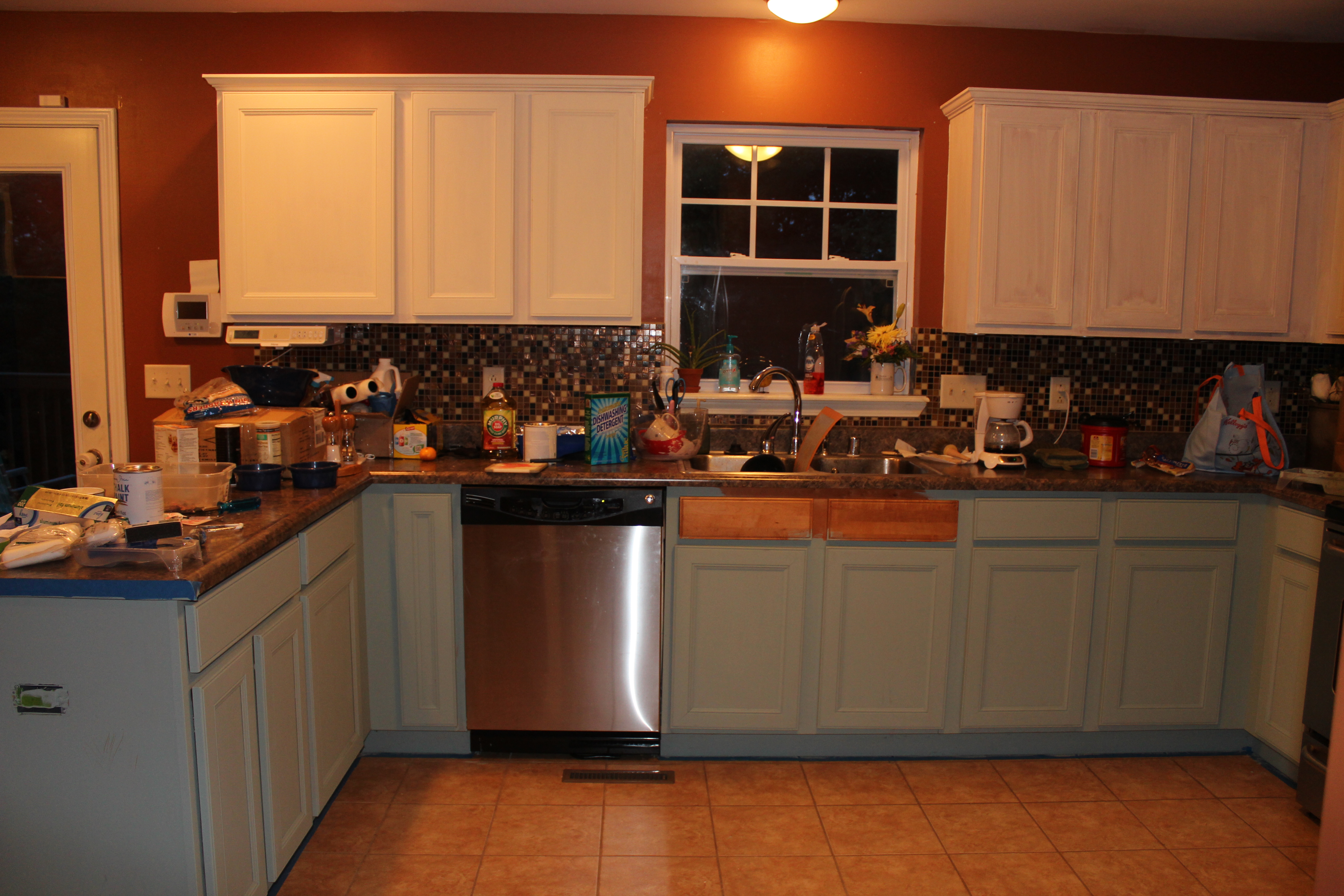 Incorporating the same color on your kitchen walls and cabinets may seem like a bold design choice, but it can have a significant impact on the overall look and feel of your space. Not only does it create a cohesive design, but it also emphasizes your cabinets, makes your kitchen look bigger, and allows you to customize your color scheme. So next time you're thinking about repainting your kitchen, consider painting your walls the same color as your cabinets for a cohesive and stylish look.
Incorporating the same color on your kitchen walls and cabinets may seem like a bold design choice, but it can have a significant impact on the overall look and feel of your space. Not only does it create a cohesive design, but it also emphasizes your cabinets, makes your kitchen look bigger, and allows you to customize your color scheme. So next time you're thinking about repainting your kitchen, consider painting your walls the same color as your cabinets for a cohesive and stylish look.
